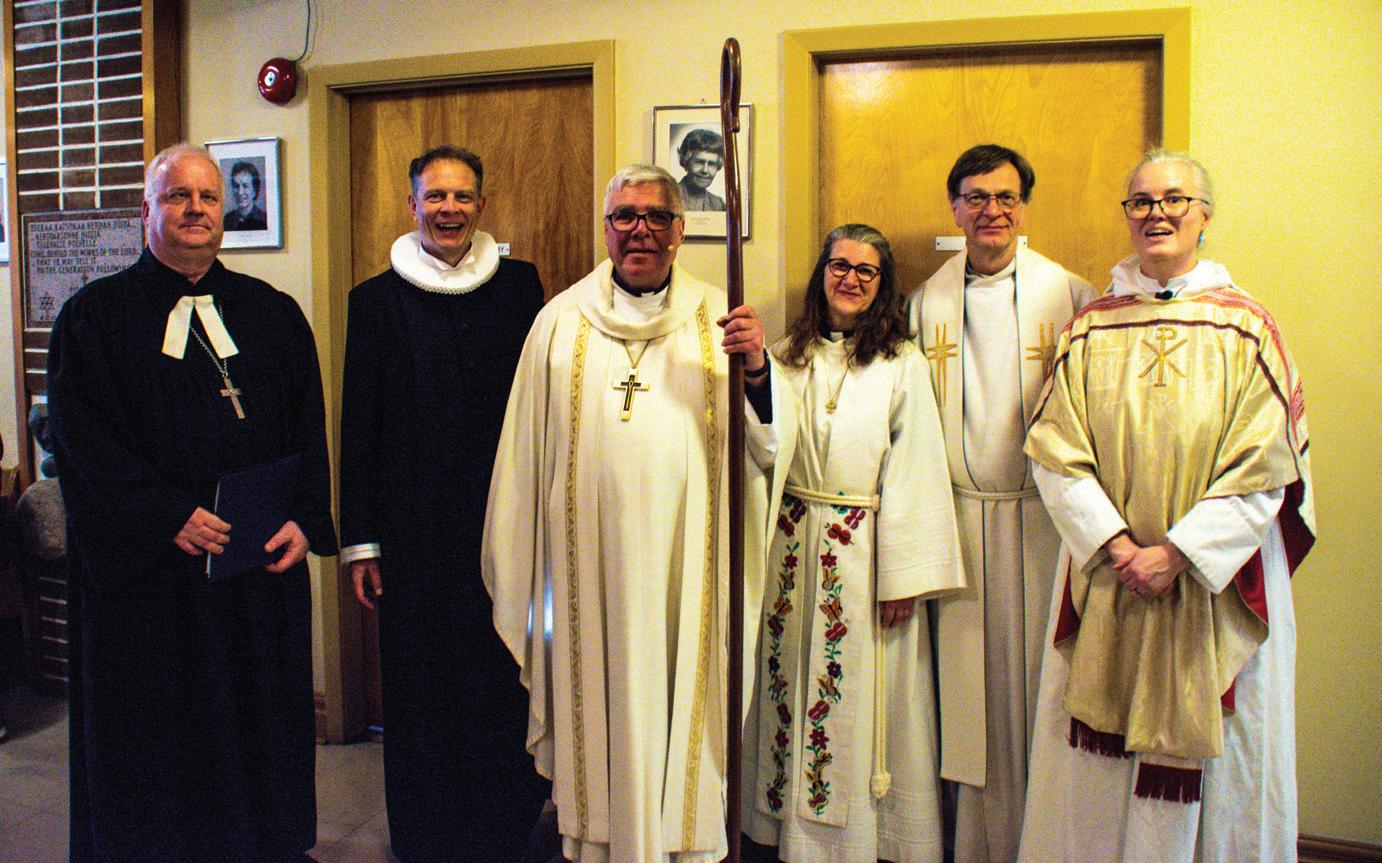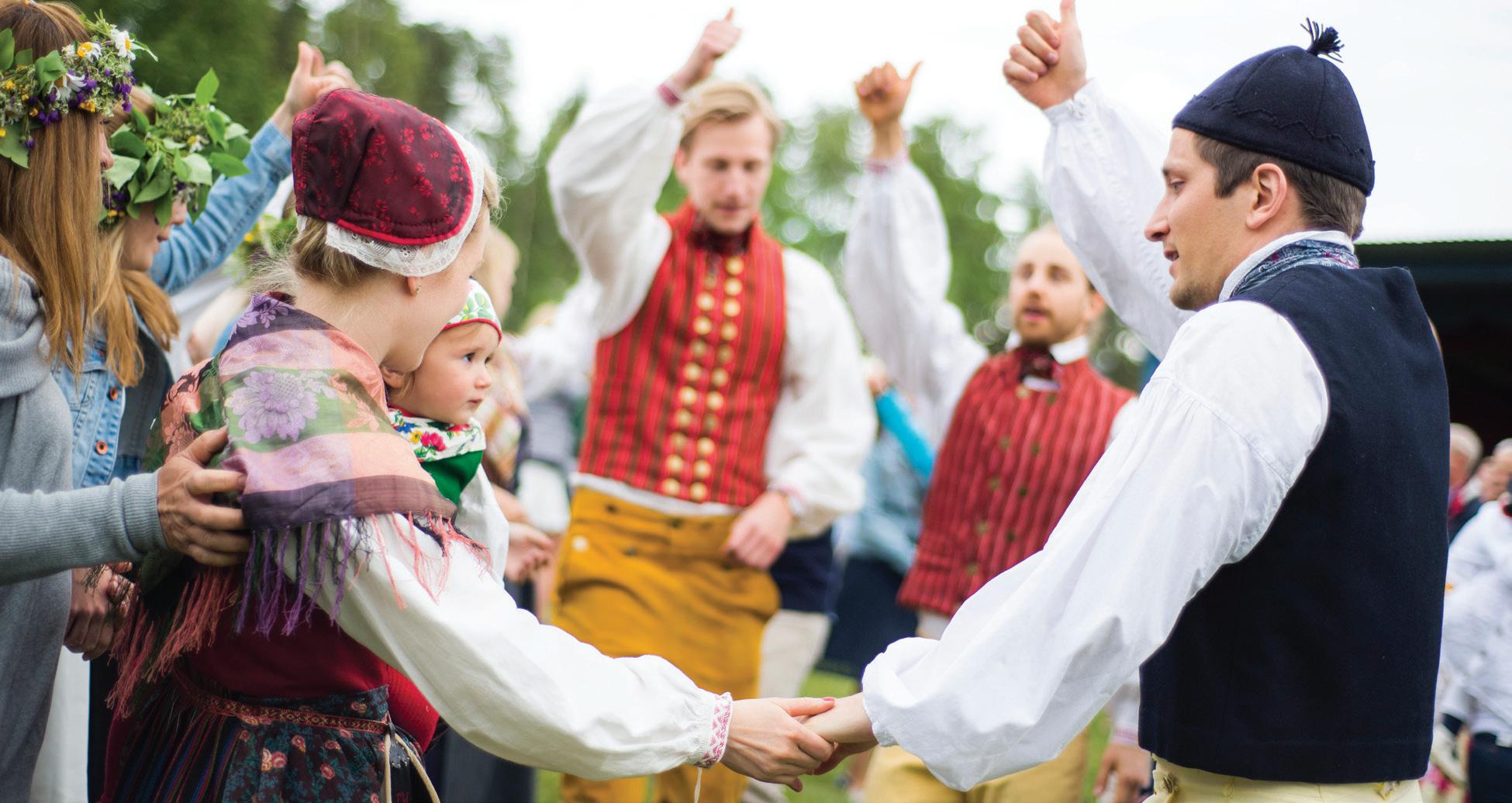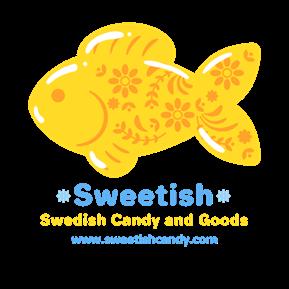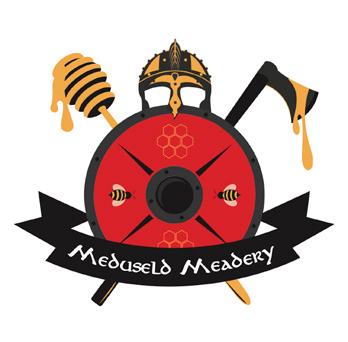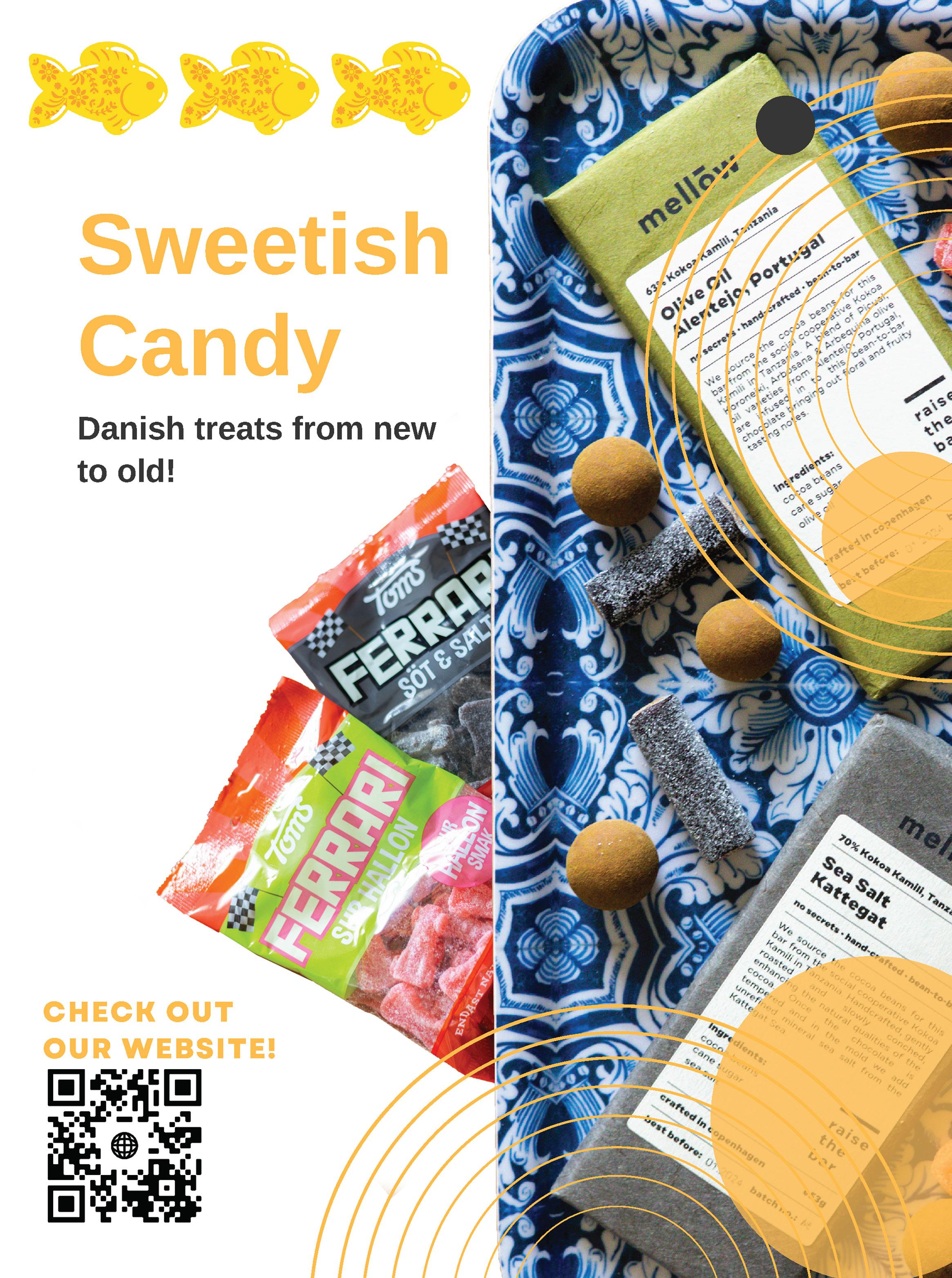




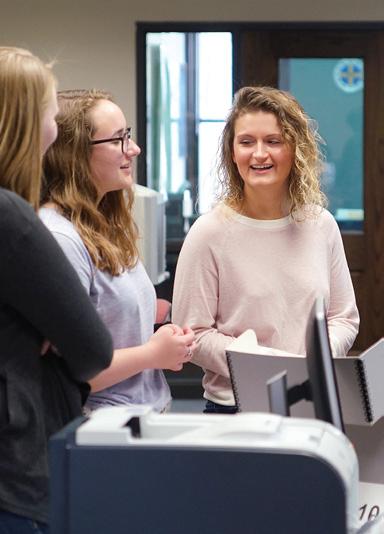

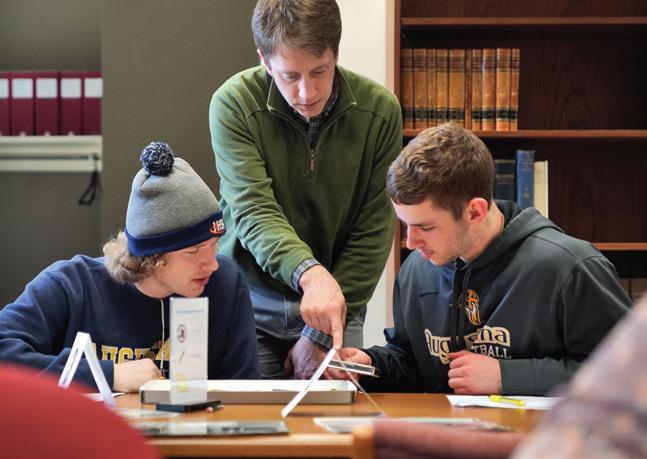

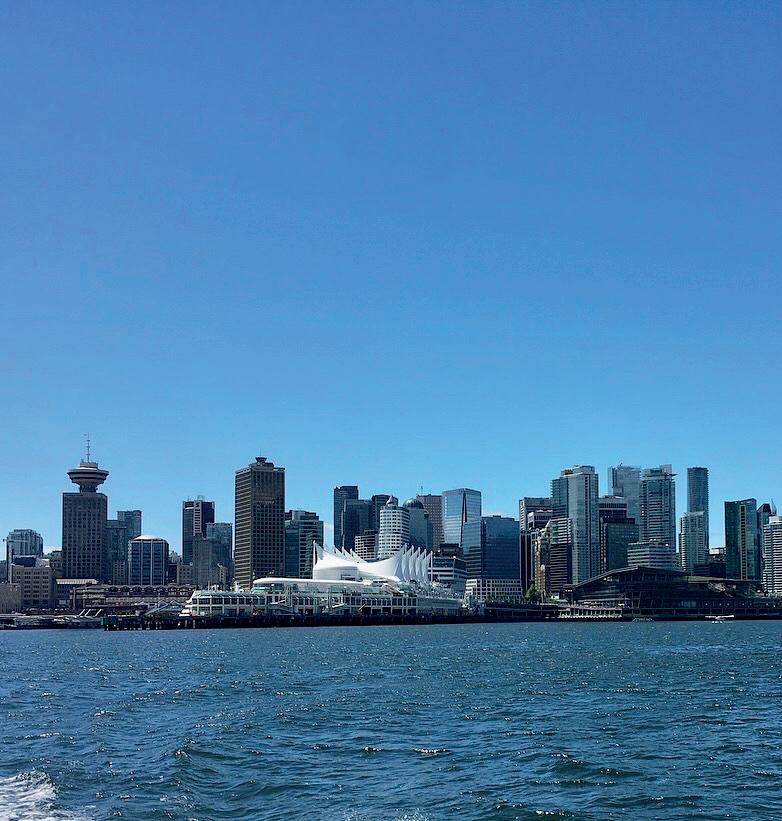
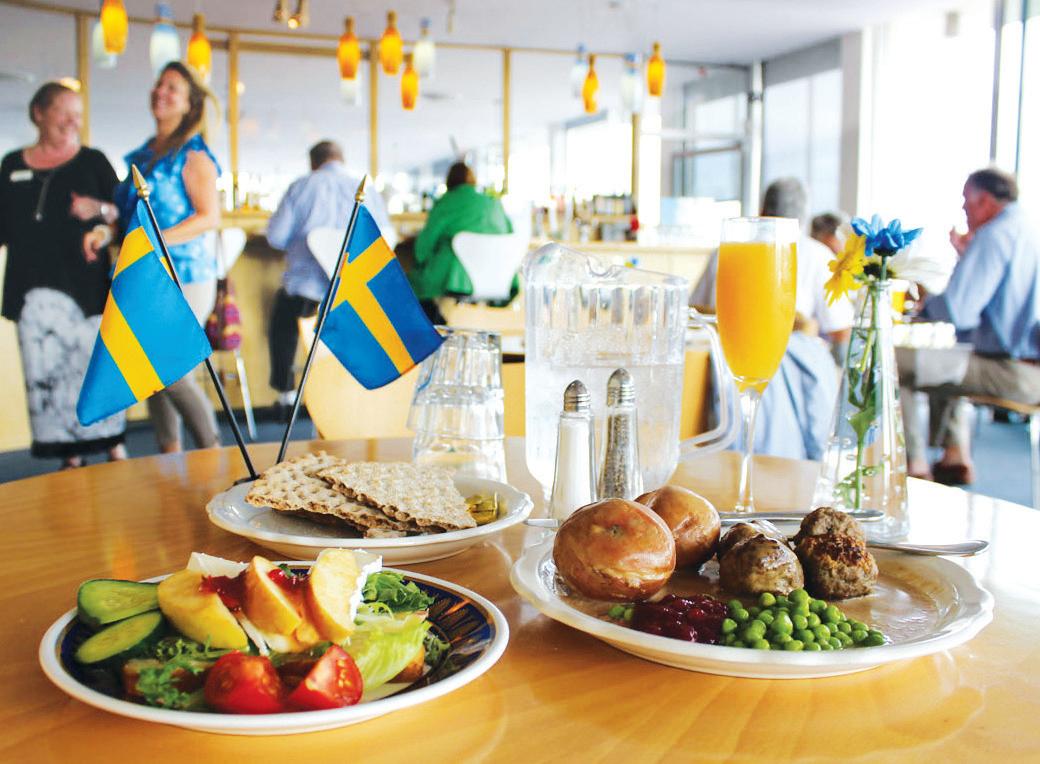
Swedish Press is the world’s leading magazine on all good things Swedish. An authority on design, business, culture and travel since 1929, Swedish Press delivers insightful news and commentary in a visually striking format. With a nod to the past, and a peek to the future, Swedish Press is your go-to source for updates and inspiration from Sweden.
SWEDISH PRESS (ISSN 0839-2323) is published
six times per year by Swedish Press Inc, 1801 Ford Street, Ogdensburg, NY 13669. Periodical postage paid at Ogdensburg, NY 13669 (No. USPS 005544).
US POSTMASTER: Send address changes to Swedish Press, PO Box 1568 Ogdensburg, NY 13669
OFFICE: 1-402 O’Connor Street, Ottawa, ON K2P 1W3, Canada
US MAILING ADDRESS: PO Box 1568 Ogdensburg, NY 13669
WEBSITE www.swedishpress.com

E-MAIL info@swedishpress.com
TOLL FREE +1 866 882 0088
PUBLISHER and EDITOR-IN-CHIEF
Kajsa Norman | kajsa@swedishpress.com
ART DIRECTOR
Louise Rybring | webmaster@swedishpress.com
YOUTH EDITOR
Noelle Norman | noelle@swedishpress.com
Calgary: Carin Pihl +1 403 931 0370
Edmonton: Ruth E. Sjoberg +1 780 237 6730
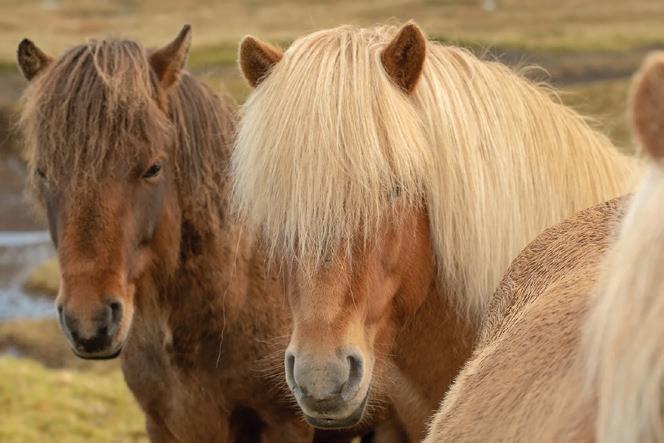
Thunder Bay: Elinor Barr +1 807 344 8355
Winnipeg: Craig Sidwall +1 204 391 7886
SUBSCRIPTION rates per year $59, 2 years $99, 1 year abroad $185. Digital edition $39. Subscribe Toll Free at 1 866 882 0088 or at www.swedishpress.com.
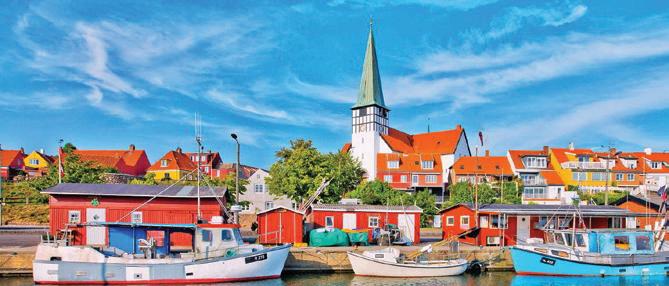
ADVERTISING Contact: info@swedishpress.com or 1 866 882 0088 for advertising rates.
SweMail TRANSLATIONS to English of the Swedish parts of Swedish Press are available free of charge every month. Visit http://biolson. atspace.cc/swemail/
© ALL RIGHTS RESERVED Reproduction in whole or in part without written consent of Swedish Press is strictly prohibited. Unsolicited material is welcome, but never the publisher’s responsibility. Enclose stamped self-addressed envelope for return. Statements and opinions expressed by the writers and claims in the advertising are their own and do not necessarily represent Swedish Press.
CANADIAN PUBLICATIONS MAIL AGREEMENT
No. 40010214 Return Undeliverable Canadian addresses to Swedish Press, 1-402 O'Connor Street, Ottawa, ON K2P 1W3 Canada.
PRINTED IN CANADA
NEXT ISSUE DEADLINE: AUGUST 10, 2023
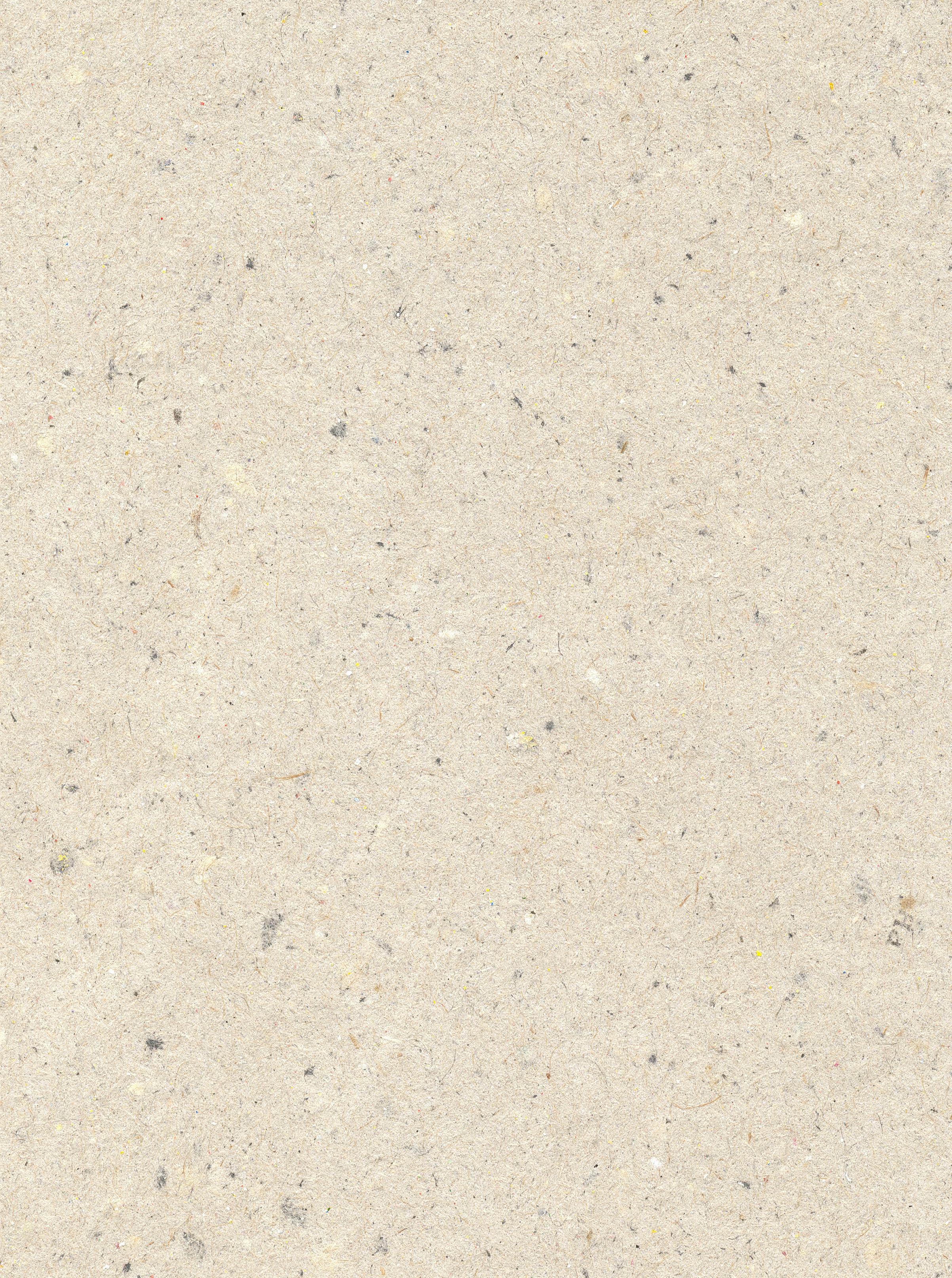
One dark winter evening in Swedish Lapland, a 9-year-old Sámi girl called Elsa is the involuntary witness to the slaughter of a reindeer calf by a poacher from one of the non-Sámi villages. The calf belongs to Elsa. The man’s intention is to transport the dead animal back to his dwelling and sell it on the black market. Elsa recognizes the man. When he sees her, he abandons the reindeer on the ground. Before taking off on his snowmobile, he points at her, holding an index finger to his lips – shhh! – before drawing his finger across his throat.
Thus begins the story about Sámi reindeer herders and the survival of Sámi traditions within Swedish society. When Elsa and her dad report the killing of her reindeer to the police, the latter can’t be bothered to visit the crime scene and investigate the incident. The Sámi consider the illicit killing of their reindeer as murder, whereas the police classify it as low-priority “theft”. In addition, the police justify their unwillingness to deal with the matter by Elsa’s refusal to serve as a witness for fear of physical revenge by the perpetrator. So, the crime goes unpunished.
The years pass. Poachers keep killing reindeer both for profit and to humiliate the Sámi community. As Elsa grows older, she is intent on exposing the villains. She is partly successful. In the end, the two main
culprits meet a gruesome fate, despite never having been brought to justice.
The crime narrative is interspersed with insights into the daily lives of Sámi reindeer herders. There are similarities with past injustices committed by the authorities in North America against the indigenous peoples, including confiscation of traditional territories and discrimination against individuals. Elsa, her parents, and her brother are faced with vicious gossip, deprivation, fear of retribution, and mental health issues. Some non-Sámi people use the derogatory term “Lapps” to describe the Sámi, and the saying among them goes that “A good Lapp is a dead Lapp”.
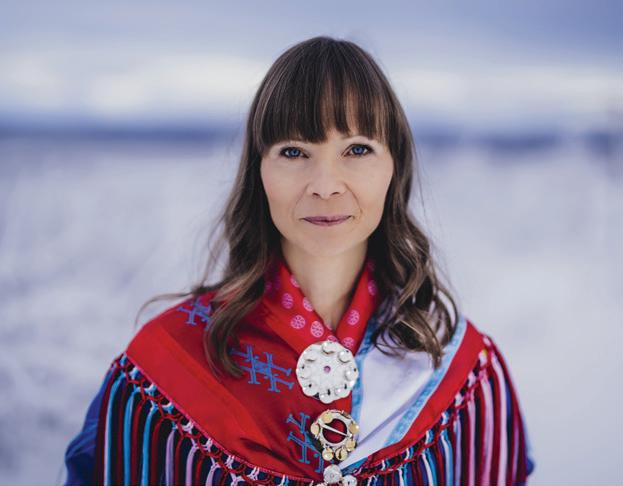
Elsa remains the lead character throughout the story. She is intrepid, stubborn, has few friends and a strong desire to defend Sámi values against the intrusion of modern Swedish society.
Stolen is the first adult novel by Sámi author and journalist AnnHelén Laestadius. Her other works include the prize-winning young adult novel Tio över ett (Ten Past One) which is set in the context of the much-publicized move of the City of Kiruna to a different location. The prose in Stolen is unremarkable, sometimes with Sámi words mixed in which are not always translated. Each chapter has an enigmatic heading, such as Vihtta or Golbmalogiokta, obliging the reader to look for translations on the Internet. (The headings turn out to be Sámi for the chapter number.) It is not always easy for the reader to deduce which of the characters is speaking. In contrast to most other detective stories, the reader knows from the outset the identity of the main villain.
Despite these limitations, Stolen makes for an informative read for people who are interested in the challenges facing indigenous communities in Scandinavia, Canada and elsewhere in the world.
ISBN 9781668005071.
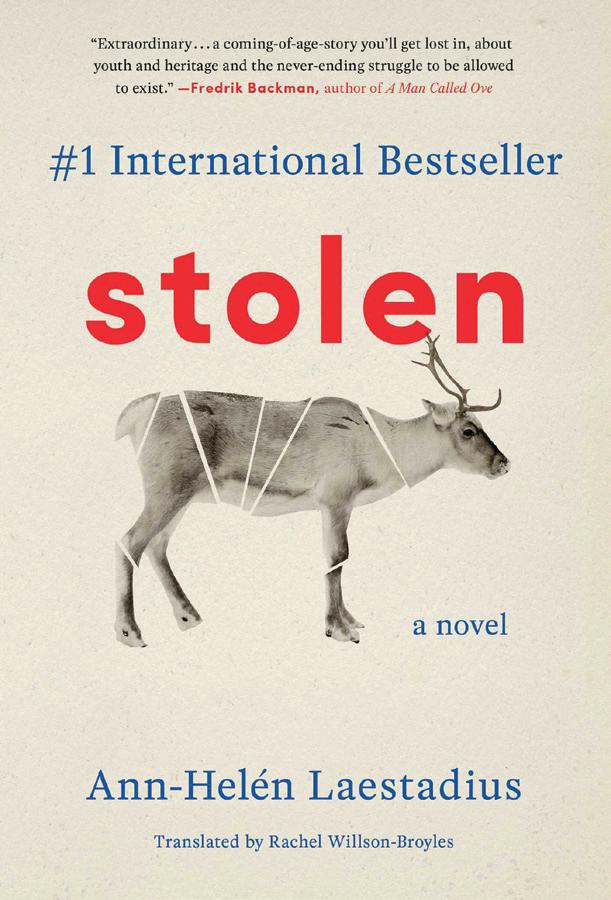 Stolen by Ann-Helén Laestadius, translated from the Swedish original Stöld by Rachel Wilson-Broyles. Published by Scribner Canada (2023), 384 pages.
Stolen by Ann-Helén Laestadius, translated from the Swedish original Stöld by Rachel Wilson-Broyles. Published by Scribner Canada (2023), 384 pages.
Throughout history, the Scandinavian kingdoms of Sweden and Denmark have been entangled in a complex relationship. From ancient battles to more recent clashes, the wars fought between Sweden and Denmark have defined political borders, cultural identities, and the balance of power in the Nordic region.

Brandon Benson
Astrid Marklund, Honorary Consul, Houston
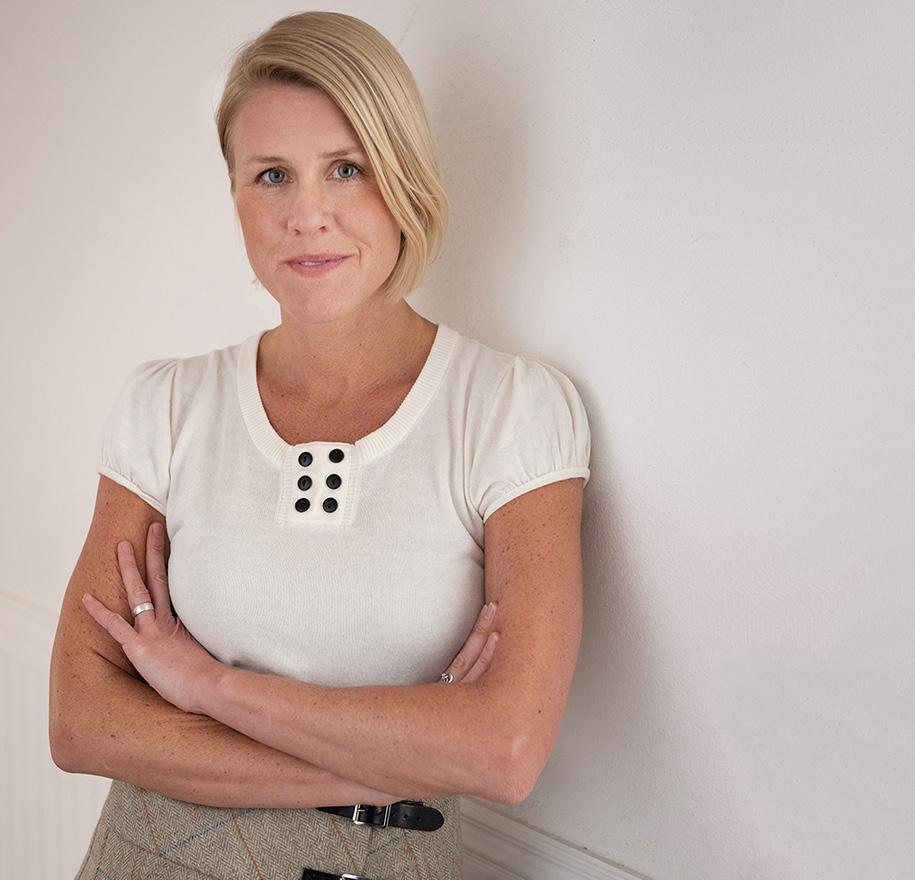
Laura A Wideburg
Nina Kindblad
Elisabeth Drangel Sze
Olle Sander

Marianne Skarborn
Rick Ohlund
Stuart Mork
Anne Charlotte Harvey
Monica Hill
Karla Hayter
Kerstin Mayberry
Staffan & Inger Melin
Patricia Charlson
Thomas L. Martin
Garry Hammerback
Gunilla Lawrie
Lars-Erik Almen
Margareta Nystrom
Ray Nyroos
It all started in medieval times when both Sweden and Denmark vied for control over vital trade routes and strategic territories. The Kalmar Union, established in 1397, briefly brought the two kingdoms under a single monarch. However, this union was marred by tensions and power struggles, eventually leading to its dissolution in 1523.
Fueled by religious and political rivalries, the subsequent Northern Seven Years' War (1563-1570) saw both sides engage in a fierce struggle for dominance in the Baltic Sea region. Sweden, under the leadership of King Erik XIV, sought to expand its influence, while Denmark, ruled by King Frederick II, aimed to assert its control over the contested territories. The war ultimately ended in a stalemate.
The brutal and protracted Great Northern War (1700-1721) saw Sweden, under the rule of King Charles XII, pitted against a coalition consisting primarily of Denmark, Russia, and Poland. Sweden, once a dominant force, suffered significant territorial losses and economic decline. The war solidified the ascendency of Russia and reshaped the geopolitical landscape of Northern Europe, shifting the balance of power to the east.
During the Napoleonic Wars, Sweden and Denmark once again found themselves on opposing sides as Sweden allied with France while Denmark supported Britain. This last major conflict between the two countries ended with the cession of Norway from Denmark to Sweden through the Treaty of Kiel in 1814.
After 1814, a sense of Scandinavianism emerged in the region. In 1829, at a celebration of the Danish writer Adam Oehleschläger, Swedish poet Esaias Tegnér famously captured the zeitgeist of the time when he stated: “The time of division is over, and she should never have existed.”



By emphasizing their shared heritage, rooted in Norse mythology, intellectuals of the time successfully forged a collective identity that could overcome political and historical divisions, transcend national boundaries, and foster a sense of panScandinavian unity.
Kjerstin Lindstedt Dean
Thank you for your support!
Today, the legacy of Scandinavianism lives on. Despite our tumultuous history, Sweden and Denmark have managed to transcend past animosity and forge a lasting peace built on mutual respect and shared values.
Trevlig läsning! Kajsa
We need your support!
Please consider making a generous donation to help keep your publication, and Swedish heritage, alive. You’ll find a form on page 29 of the magazine. Tack!
Mette Frederiksen is the youngest Prime Minister in Danish history. In Scandinavia, she has become the face of the anti-immigration left, while in North America she is better known as the leader who refused to sell Greenland to Donald Trump.
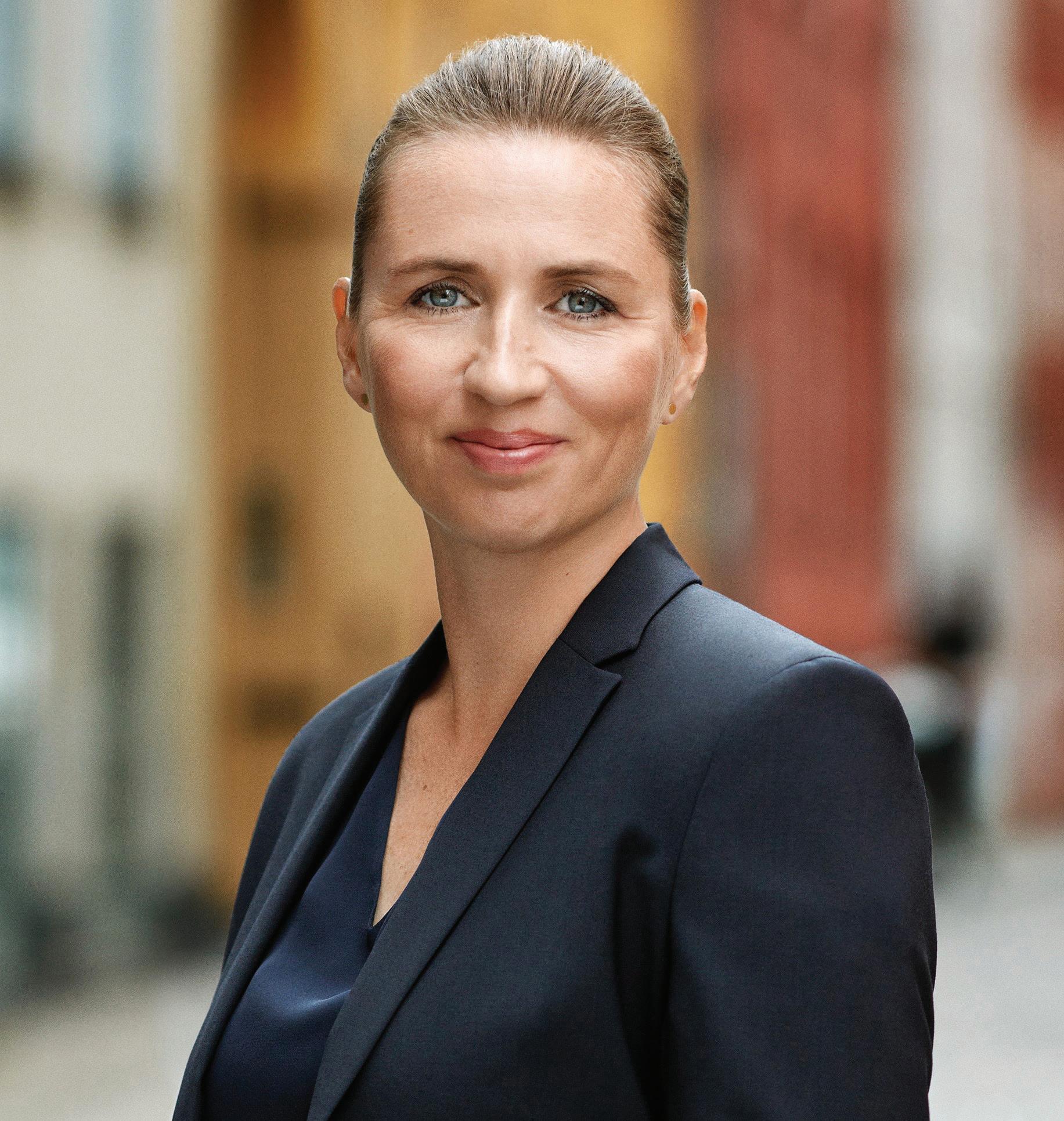
Fans of the Danish drama series “Borgen”, on Netflix, might be interested to know that Danish Prime Minister Mette Frederiksen is the real-life person who inspired the developments of main character Birgitte Nyborg in the show's fourth season.
45-year-old Frederiksen comes from Aalborg and represents the 4th generation of a politically active social democratic family. Her father worked as a typographer and her mother as a pre-school teacher. Both were devout members of the Social Democrats and political discussions were an integral part of family life. Frederiksen was the first generation of her family to go to university, where she earned a degree in business administration and social sciences, and a Master’s degree in African studies.
Frederiksen’s activism started in her early teens when she began supporting the anti-apartheid ANC in South Africa and campaigned to protect both rainforests and whales. At 15, she joined the youth league of the Danish Social Democrats and quickly rose through the ranks. At the age of 24, she became the youngest person ever elected to Danish parliament.
In 2011, Helle Thorning-Schmidt became Denmark’s first female Prime Minister, and she appointed Frede-
riksen, then 33 years old, Minister of Employment. After a reshuffling of the Cabinet in 2014, Frederiksen became Minister of Justice.
During the 2015 general election, the “blue bloc”, consisting of the Danish People's Party, Venstre, Liberal Alliance and the Conservative People's Party, won a narrow majority and Venstre party leader Lars Løkke Rasmussen became Prime Minister.
Following this electoral defeat, Helle Thorning-Schmidt stepped down as both Prime Minister and as leader of the Social Democrats. Frederiksen won the subsequent party leadership election to replace her, becoming Leader of the Opposition.
Under Frederiksen’s leadership, the Danish Social Democrats shifted to the left on fiscal policy, but sharply to the right on immigration.
“For me, it is becoming increasingly clear that the price of unregulated globalisation, mass immigration and the free movement of labour is paid for by the lower classes,” she said in a 2019 biography.
Frederiksen and her party called for a cap on “non-western immigrants”, for asylum seekers to be expelled to a reception centre in North Africa, and for all immigrants to be forced to work 37 hours a week in exchange for benefits.
The Social Democrats also voted
Danish Prime Minister Mette Frederiksen. Photo: Statsministerietin favour of a law allowing jewellery to be seized from refugees as payment for benefits, as well as a burqa and niqab ban. Frederiksen also reached out to the populist Danish People’s party (DPP), discussing a government cooperation with them and backing their efforts to make repatriation, rather than integration, the goal of asylum policy.
She promoted her approach as a remedy for ailing Social Democratic parties and criticized social democrats across the world for losing the trust of their core voters by failing to prevent globalisation from eroding labor rights, increasing inequality, and exposing them to uncontrolled immigration.
“For years, we have underestimated the challenges of mass immigration,” she said at a meeting in Lisbon in 2018. “Economic policy and foreign policy in Europe have been too liberal. We have failed when it comes to maintaining the social contract, which is the very foundation of the socialdemocratic social model.”
In Sweden, Frederiksen was widely condemned in the media for her tough stance on immigration, but in Denmark her popularity continued to grow. Even after a term with the most anti-immigration government Denmark had ever seen, an internal Social Democrat survey of the party’s core voters showed that 37 percent still thought immigration policy was too lax. And with Frederiksen championing much of the policy proposed by the populist Danish People’s Party (DPP), few Danish voters saw the need to keep voting for the DPP. In 2019, support for the DPP fell to below 9 percent (from 21 percent in the 2015 elections).
The 2019 elections resulted in a
victory for the “red bloc”, consisting of the Social Democrats, the Social Liberals, Socialist People's Party, the Red–Green Alliance, the Faroese Social Democratic Party and the Greenlandic Siumut – parties that all supported Frederiksen as Prime Minister. Frederiksen was sworn in on 27 June 2019, and went on to lead a Social Democrat minority government. At the end of 2021, she became the longest-serving incumbent female head of government in the European Union.
Despite criticism from the UN and Brussels, Frederiksen has continued to advocate for a “zero refugee” policy. Her government has initiated a controversial project to relocate asylum seekers to Rwanda while their applications are processed and the country has revoked residence permits for Syrians hailing from regions it considers safe.
In November 2020, Denmark culled 17 million minks to prevent the spread of COVID-19. Later, it turned out this decision had been illegal. Frederiksen was fiercely criticized and forced by the opposition to call for early elections in the fall of 2022.
In the subsequent November 2022 elections, Frederiksen’s party achieved its best result in 20 years, garnering 27.5 percent of the votes, a remarkable achievement in Denmark’s fragmented political landscape. As a result, Frederiksen now leads a coalition government that bridges the traditional left-right divide.
While her tough stance on immigration has dominated media coverage about her in Scandinavia, to North Americans she is perhaps best known as the leader who refused to sell Greenland to Donald Trump.
In August 2019, Donald Trump announced his interest in buying Greenland.
“Greenland is not for sale. Greenland is not Danish. Greenland belongs to Greenland. I strongly hope that this is not meant seriously,” Frederiksen told Greenland newspaper Sermitsiaq. In an interview with Danish broadcaster DR, she added:
“It’s an absurd discussion, and [Greenland´s prime minister] Kim Kielsen has of course made it clear that Greenland is not for sale. That’s where the conversation ends.”
Trump consequently cancelled a planned visit to Denmark and accused Frederiksen of disrespect.
“I thought that the prime minister’s statement that it was ‘absurd,’ that it was an ‘absurd’ idea, was nasty. I thought it was an inappropriate statement,” Trump told reporters outside the White House.
He added: “She’s not talking to me. She’s talking to the United States of America. You don’t talk to the United States that way — at least under me.”
This episode aside, Frederiksen’s relationship with the White House is on excellent terms and rumor has it that American officials may be vetting her for the role as Secretary General of NATO. US President Joe Biden recently invited Frederiksen to Washington D.C. for a tête-à-tête.
Under Frederiksen’s lead, Denmark has contributed significant financial and military aid to the Ukraine despite significant shortcomings in its own defence. The country has also taken a lead in training Ukrainian pilots and said it is open to equipping the Ukraine with American-made F-16 fighter jets.
Current NATO Secretary General Jens Stoltenberg is due to retire later this year, and many feel the time is ripe for the alliance to get its first ever female secretary general.
If you love camping but hate mosquitoes, rain, and leaking inflatables, then Urban Camper in Copenhagen could be the perfect fit for you.
Copenhagen is notorious for being a very expensive city and finding affordable accommodation in the city center is not easy. That’s why two Danish friends, Jakob Stelzig and Sigurd Mejlstrøm, decided to create the world’s first indoor campground –Urban Camper Hostel & Bar.
It all started in 2017, when Jakob and Sigurd took over an old, empty office building in one of Copenhagen’s coolest neighborhoods, Nørrebro. By 2019, they had the necessary permit to convert it to a hostel. Doors opened in November of 2019 and then COVID-19 struck. The friends weathered the pandemic without having to lay off staff by offering long term stays for students, and by 2022 business was thriving. Urban Camper is now open year-round, offering 222 beds divided across a multitude of tents equipped with sound plates to dampen the noise.
“Camping can be a cozy, fun, affordable and social experience, so at Urban Camper Hostel we took all the cool stuff from camping and removed the uncool stuff to create an indoor urban campground where you camp in large tents indoors. It’s the ideal camping situation to be honest,” says Jakob.
Jakob and Sigurd refer to themselves as Co-Directors of Everything.
“If there’s a toilet broken, we fix it. If someone vomits, we clean it up. We
really do everything, hence the title,” says Jakob.
Both Jakob and Sigurd had backpacked around the world and stayed in their fair share of hostels. They knew what they liked and what most hostel guests need and appreciate.
“A nice common area, good shower facilities, great Wi-Fi and a good bed are the essentials,” says Jakob “We also decided to take away the hassle of having to bring your own linen, so we provide linen included in the price. If you book online on our website, you also get a free welcome drink of your choice and a complimentary towel.”
By creating an indoor campground, Jakob and Sigurd developed a unique concept that saved them the hassle of having to divide the space up into individual rooms, while also adding a cozy campground atmosphere.
They had both traveled widely in South America and wanted their hostel to have the laidback, jungle feel that they had so enjoyed there. An oasis in the heart of the city; an urbanjungle campground.
The common area is a beerhall open to the public, located on a sepa-
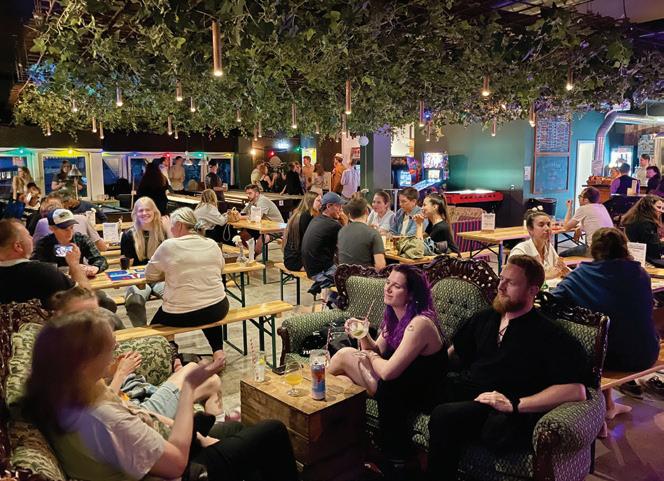
rate floor from the campground so that guests can hang out and interact without disturbing those who wish to sleep. The beer hall also features games such as pool or shuffleboard, and breakfast is served here in the morning. The presence of the beerhall and the fact that the tents can’t be locked (valuables and personal belongings are stored in lockers), requires guests to be 18 years or older to stay at Urban Camper.
Currently rated the third best hostel in Copenhagen, a bed in a 4-bed mixed or female-only tent will set you back 160 DKK ($23) per night, while a private 4-bed tent costs 680 DKK ($100) for the tent or 525 DKK ($77) for a private double. To learn more, visit https://urbancamper.dk/
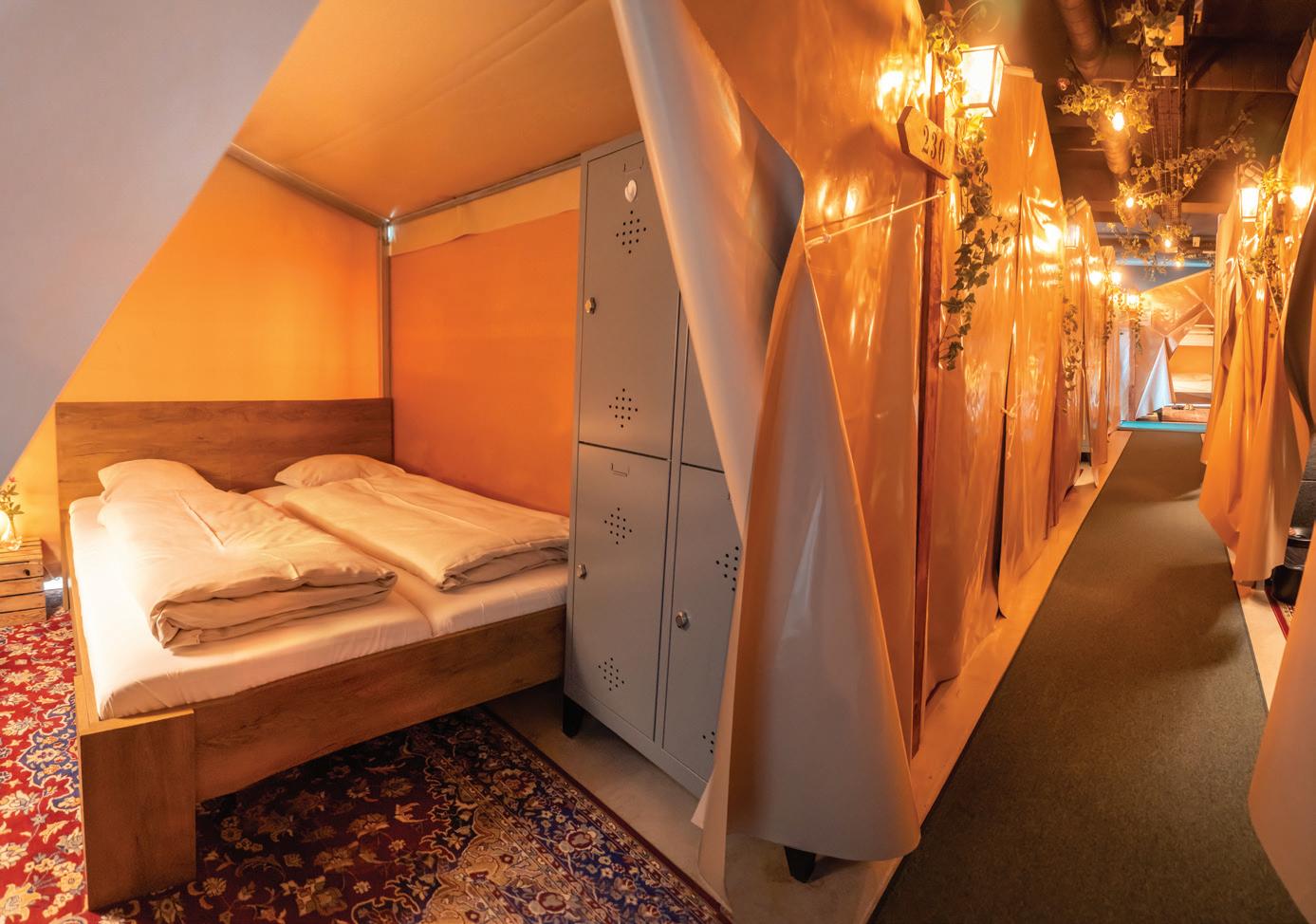 Indoor camping in Copenhagen. Photo: Urban Camper
Indoor camping in Copenhagen. Photo: Urban Camper

Redan på flygplatsen i Danmark var det tydligt vilka passagerare som skulle flyga till Reykjavik. De flesta resenärer till Island hade vandringsbyxor med flertalet fickor, ryggsäckar och kängor. Även vår familj hade lämnat partykläderna hemma trots att maken fyllde 50 år när vi begav oss till Island för allra första gången. Det sägs att Island just nu är världens dyraste land att resa i men hur dyrt kan det egentligen bli om man bara är där i tre dagar? Dessutom slapp vi att bjuda på fest hemma så vi kanske till och med tjänade på att göra denna resa – barnen hade fått stränga order om att dela portioner under restaurangbesök.
Det som slog mig direkt när vi landade var att man som svensk och med rätt goda kunskaper i danska, engelska och tyska förstod isländska i skrift överraskande lätt och barnen älskade att se bokstäverna som härstammar från vikingarna. Isländskan är det enda språket i världen som har bokstäver kvar från vikingatiden.
Att Island en gång tillhört Danmark vet de flesta. År 1943 löpte unionsavtalet med Danmark ut och 1944 hölls en folkomröstning där hela 97 procent av folket röstade för att avsluta unionen. Man ville undvika en tysk ockupation av Island och samtidigt utropa sig själv till en självständig republik, vilket man gjorde 1944.
Spår av Danmark märks tydligt
än idag på såväl matutbud som språk. Den otroligt vackra danska ambassaden är centralt belägen i Reykjavik och får stor uppmärksamhet av turister. Att islänningarna är otroligt stolta över sitt eget språk, sin flagga och sin kultur kunde dock inte undgå någon då isländska flaggor präglade hela huvudstaden. Man påminde oss gärna om att Island även lyckats få fram talanger både inom musik – med artister som Björk –och sport, då Island nådde kvartsfinal i fotbolls-EM 2016 med svenska tränaren Lars Lagerbäck.
Eftersom vi hade kort om tid hade vi bokat en heldagstur för att se hela ”Golden Circle” samt avsluta med bad i ”The Blue Lagoon” som alla turister pratar om men som islänningarna själva gärna undviker då de tydligen har ännu bättre och hemliga alternativ.

Guiden tog oss till magiska platser och stundtals kändes det som om vi befann oss på en annan planet – marken var annorlunda, landskapet kändes både som öken och vinter på en och samma gång. Det kändes som om det fanns fler Islandshästar än människor. Gigantiska vattenfall med det blåaste vattnet du kan tänka
dig och gejsrar som sprutade likt fontäner var tionde minut var som tagna ur en film. Alla dessa isländska upplevelser avlöste varandra under en och samma dag.
Att jag kunde skaka hand med en kvinna från New York som stod på den amerikanska kontinenten samtidigt som jag själv stod på den europeiska kontinenten (Tingvalla) var lika coolt som att en stund senare (iförd vit ansiktsmask) kunna beställa en drink i en rykande het, blå lagun – en perfekt mötesplats för amerikaner och européer.
Därmed blev Island den perfekta 50-års presenten till min make. Reskassan var spräckt redan efter första dagen men vad gjorde det när man fick ha ena benet i Amerika och det andra i Europa!
Summary in English: Iceland is where the tectonic plates of North America and Europe meet and, like Svea and her American friend, you can stand with one foot in Europe and the other in North America. Iceland gained its independence from Denmark in 1944 after holding a referendum where 97 percent of the population voted to end the union.

Footnote: Yvonne “Svea” Gossner är en f.d universitetsadjunkt och Swedish influencer, numera ägare av Learn Swedish Culture AB. www.learnswedishculture.com

In the summertime, the canals, waterways, and harbors of Copenhagen teem with life. Over the past two decades, a lot of effort has been invested into cleaning up and transforming the area such that Copenhagen is now one of few European cities with harbor water clean enough to swim in.
As a result, centrally located harbor baths and designated swimming zones have popped up all over the city – from Sandkaj in Nordhavn all the way down to Sluseholmen in the south. Along the canal, on both sides, swimming platforms have been installed. All harbor baths are free of charge, and most are located minutes away from restaurants and cafés.
Copenhagen harbor stretches about 12 kilometres from south to north with a public waterbus servicing the length of the harbor. In an effort to keep the water clean, it’s the first city in the world where public transport on the water is 100 percent electric.
Even though the population of Copenhagen is a mere 600,000, it is estimated that 2 million people use the harbor every year, including 230,000 swimmers. In 2019, CNN declared Copenhagen the best bathing city in the world, and in recent years, Copenhagen has hosted the Red Bull Cliff Diving World Series five times. Watching skilled divers from around the world launch themselves into the harbor from the rooftop of the Opera house is
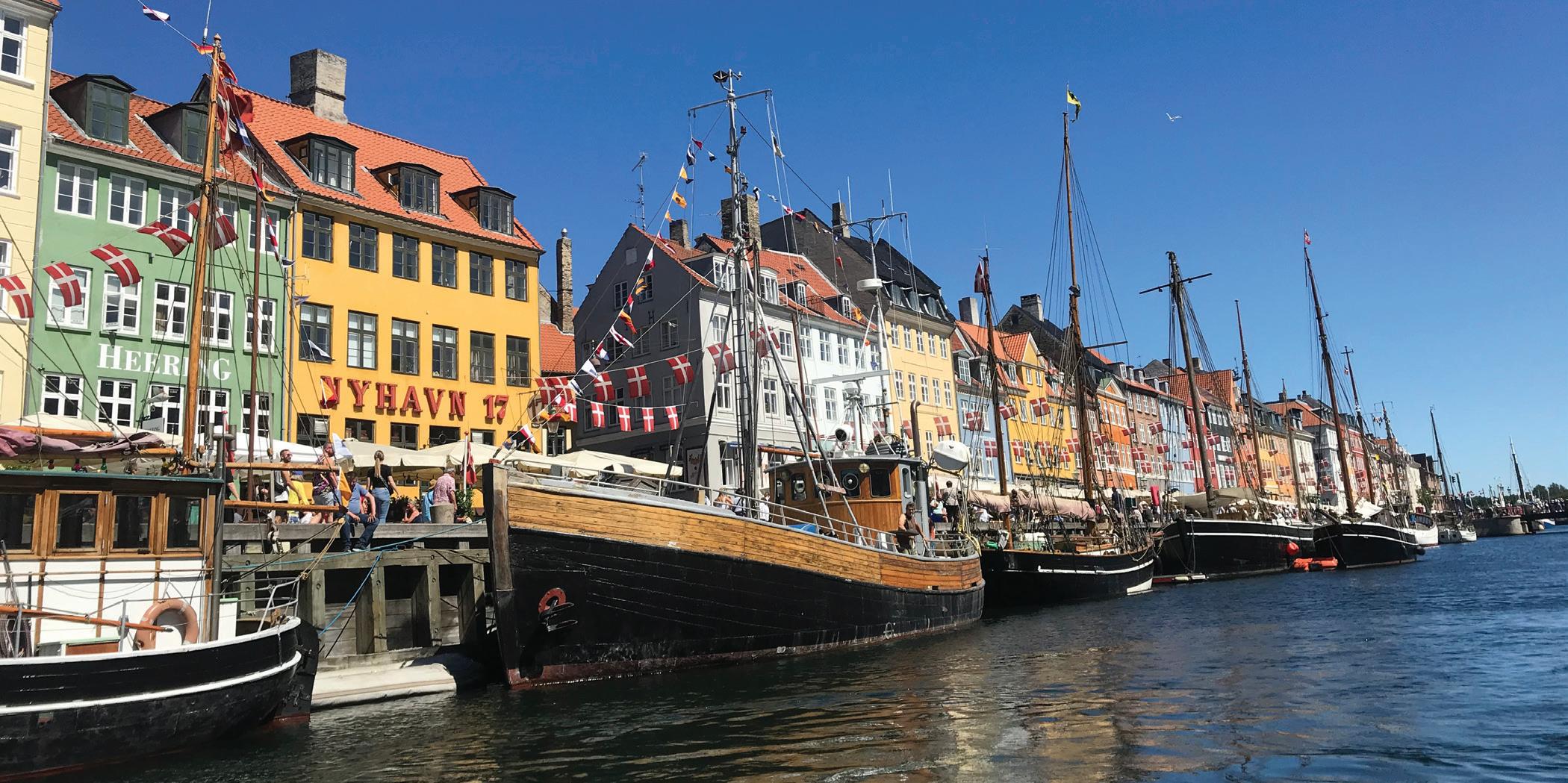
spectacular and not to be missed if you happen to time the next event.
If swimming isn’t your thing, or if you’re visiting during the colder months, you can still kayak, paddleboard, or boat around in the harbor. There are large canal boats that offer sightseeing tours as well as more intimate options. From GoBoat you can rent electric motorboats at affordable prices for up to 8 people. No boating license required. The boats are designed to be slow, about 3 knots (5-7 km/h) and silent and often feature a picnic table in the middle for an enjoyable couple of hours or day on the water. Whichever option you chose, if you’re a first time visitor, don’t miss the following sights on or near the water.
Whether you’re a first-time visitor or a veteran, here’s our best tips for how to enjoy 72 hours in Copenhagen and its surroundings.cafes. Three of the previous homes of famous Danish fairytale writer Hans Christian Andersen are also located in Nyhavn (no. 18, 20 and 67). It is a great place to stroll, catch some live music, or stop for a beer – in the daytime or at night.
Denmark. The hippie micronation has its own flag – a red banner with three yellow circles representing the dots in each “i” in “Christiania” and has become a popular tourist destination.
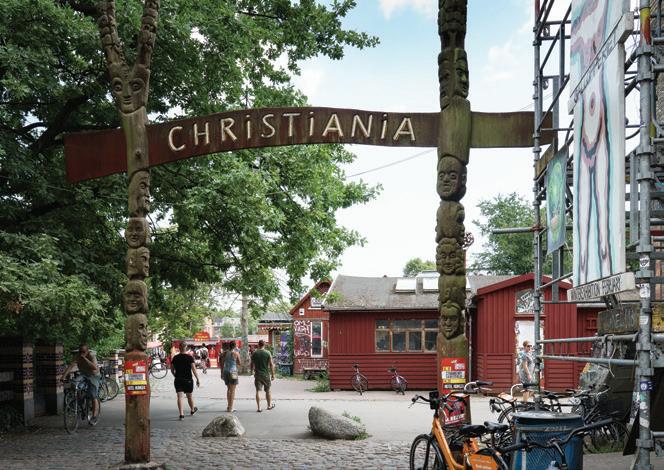
In 2019, the CNN referred to it as “a weed-smoking Disneyland”. While it can feel a bit overcrowded in the summertime, if you’ve never been, it’s worth a quick stop.
Reffen
Unveiled on 23 August 1913, Den Lille Havfrue, as she is known in Danish, is arguably Copenhagen's most famous tourist attraction. She was a gift from Danish brewer Carl Jacobsen to the City of Copenhagen. Jacobsen watched a ballet performance based on the fairy tale at the Royal Danish Theatre in Copenhagen and was so captivated by the character that he commissioned artist Edvard Eriksen to create the sculpture, made of bronze and granite. The Little Mermaid sits in the water at Langelinie Pier, welcoming travelers to Copenhagen harbor.
Known for its beautiful old houses, Nyhavn is a great place to join one of the many canal tours that allow you to explore Copenhagen from the water.
In the olden days, Nyhavn was a commercial port where ships from all over the world would dock. As such it turned into a popular hub for sailors who would frequents its many pubs, alehouses, and brothels.
Today, the area remains a hub for nightlife and restaurants. The colorful houses of the old port have been renovated and many have been transformed into restaurants and
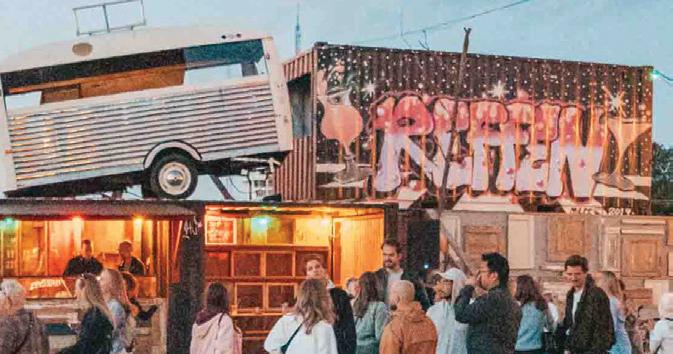
Christiania, also known as Freetown Christiania, is a breakaway anarchist commune in the heart of Copenhagen. First established in 1971 when a group of hippies, junkies, and outcasts set up a permanent squat in a former military base, over the years it developed into a self-contained community that rejected state control.
Today, Christiania, and in particular Pusher Street, remains a place where drugs are openly sold and consumed even though this is illegal in
End your day on the water by heading to Reffen, Copenhagen’s street food market and outdoor party area at Refshaleøen. Here, you'll find more than 50 start-ups in the form of food stalls, bars, and creative workshops. 4000m2 of the facilities are located right on the water so you can enjoy your dinner and drinks in a sun chair with front-row views of Copenhagen harbor, and even squeeze in some more swimming if you haven’t had enough.

Tivoli Gardens, often known simply as Tivoli, is a historic amusement park and garden in the heart of Copenhagen. Even if amusement parks aren’t normally your cup of tea, visiting Tivoli is a must. Here’s why.
InDenmark, the amusement park culture dates as far back as the 1500s. Just a few miles north of Copenhagen sits Dyrehavsbakken, or simply Bakken. In 1583, a natural spring was discovered here, and residents of the capital flocked to the area to sample clean water, a commodity in short supply in Copenhagen at the
time. The large crowds brought with them entertainers, performers, and vendors, giving birth to the world’s first amusement park. Today, Bakken features free entrance (visitors pay for rides only) and many modern rides, but despite being the world’s oldest park still in operation, it cannot rival the historic charm that Tivoli
The sculpture of The Little Mermaid was inspired by Hans Christian Andersen’s famous fairy tale by the same name. Christianahas managed to preserve.
Tivoli Gardens opened on August 15, 1843, and is the second-oldest amusement park in the world. The founder, Georg Carstensen, allegedly convinced King Christian VIII to rent him the necessary space by telling him that “when the people are amusing themselves, they do not think about politics”.
From the very beginning, Tivoli included a variety of attractions including mechanical amusement rides, exotic buildings, flower gardens, restaurants, and cafés.

In 1874, Vilhelm Dahlerup (the designer of the Royal Danish Theatre) created an open-air, Chinese-style pantomime theatre, which is still in use at Tivoli. Conceived to host Italian pantomimes introduced to Denmark by Giuseppe Casorti, the theatre features a famous mechanical front curtain that unfolds like a peacock’s tail (and requires five people to operate it). Today, it also serves as a venue for ballet and modern dance, but the Italian Commedia dell'Arte tradition for which it was constructed has been kept alive with daily performances featuring classic pantomime characters such as Harlequin.
Composer Hans Christian Lumbye, who became known as the “Strauss of the North”, was Tivoli's musical director from 1843 to 1872. Many of his compositions were specifically com-
posed for or inspired by the gardens, such as “Salute to the Ticket Holders of Tivoli”, “Carnival Joys”, “A Festive Night at Tivoli”, and “The Champagne Galop,” written to celebrate Tivoli’s second anniversary in 1845.
The Tivoli Symphony Orchestra still performs many of his works. Tivoli Concert Hall features some of the top names in international classical music, the venue hosts the Copenhagen Jazz Festival, and there is a live music series known as Fredagsrock (Friday Rock), which in the past has featured artists such as the Smashing Pumpkins, Sting, the Beach Boys, Pet Shop Boys, and Kanye West.
In addition to all this, there are of course rides as well. Modern attractions include Vertigo, voted Europe’s Best Ride in 2014, which will turn you upside down at 100 km/h, but Tivoli’s best-known attractions are the old classics. Rutschebanen also called Bjergbanen is a wooden rollercoaster in operation since 1914, and one of only seven rollercoasters worldwide with a brakeman on board every train, manu-
ally braking to prevent the rollercoaster from gaining too much speed on the descent.
Throughout its history, Tivoli has impressed artists and entertainers from near and far. Fairytale author Hans Christian Andersen was one of Tivoli’s first guests and the beauty of the gardens inspired him to write “The Nightingale”. Walt Disney visited the park several times in 1951 for inspiration before opening Disneyland in 1955. The park’s existence has even left a lasting mark on the Scandinavian languages as the word “tivoli” has developed into a synonym for “amusement park” in Danish, Swedish, Norwegian, and Icelandic.
Tivoli Gardens is open between mid-April and the end of December and offers a historical ambiance and romantic allure that no other amusement park can rival. Reserve a day to explore the park and the nearby pedestrian street of Strøget, Copenhagen’s most famous shopping street, with unique boutiques and specialist shops branching off in all directions.
Hop on the train – or your bike – and head north. Not far from Copenhagen you'll find Denmark's best art museum, set on a stunning beach, as well as the Elsinore Castle of Hamlet fame.

is only four kilometers wide, is the gateway to the Baltic Sea and thanks to Kronborg Castle, it was entirely controlled by Denmark from 1429 to 1857. Some 1.8 million ships passed through Øresund during this period and all of them had to pay a toll at Kronborg Castle.
In the 1420s, Eric of Pomerania built the first castle, known as Krogen on this strategically important site.
Is there a better place to ponder Shakespeare’s eternal question to be or not to be, than in lush park, overlooking a white sand beach with turquoise waters, and surrounded by world-class art?
In Humlebæk, about 30 minutes by train or 2 hours by bike from Copenhagen, sits Louisiana Museum of Modern Art, home to one of Scandinavia’s largest collections of modern art. It contains more than 4,000 artworks dating from 1945 to present day within virtually all genres, emphasizing painting and sculpture. However, only selected works are continuously on view. In addition to the permanent collection, the museum features up to ten major exhibitions annually.
That said, it’s the combination of art, nature, and architecture that makes Louisiana a unique experience and destination. The beautifully landscaped park serves as the setting for a large sculpture collection.
The views of Øresund that frame the artworks are spectacular and there
is a gorge down to a white sand beach with turquoise waters. But best of all, the stunning surroundings are not just for looking at; they are designed to be enjoyed and lived in. Families are splayed out on their picnic blankets eating lunch, someone is napping in the shade of a tree, kids are swimming in the clear waters. Louisiana is perhaps the only art museum in the world where you beat yourself up if you forget your swimsuit.
While you can easily spend a full day here, if this is your only day in the area, make sure you save enough time to visit Kronborg Castle. Immortalized as Elsinore in William Shakespeare's play Hamlet, Kronborg Castle is one of the most important Renaissance castles in Northern Europe and a short train ride (or 30 min bike ride) from Louisiana Art Museum.
Kronborg Castle is located just north of Helsingør, at the very tip of the island of Zealand, at the narrowest part of the sound between Denmark and Sweden. This passage, which
Using wealth from the collected tolls, in 1574, King Frederik II began the construction of the much more extravagant Kronborg Castle. Today, it is declared a UNESCO World Heritage site, famous for being one of Northern Europe’s finest Renaissance castles and – of course – for being the setting for Shakespeare’s play Hamlet. True fans of the bard should visit in August when the annual Shakespeare Festival takes place, featuring open-air theatre with the castle as a backdrop.
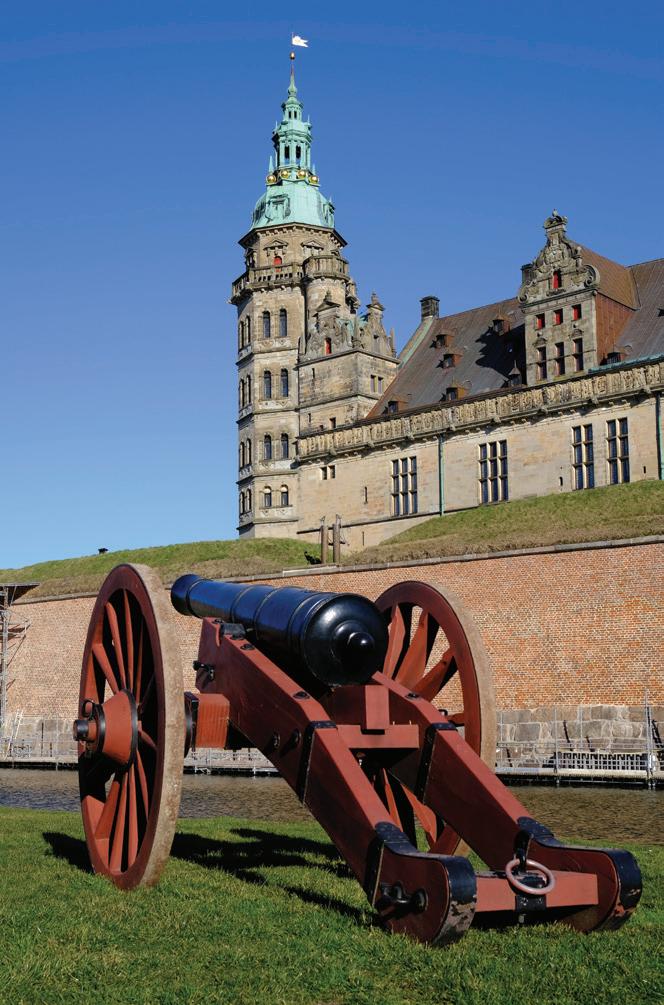 Giacometti room. Photo: Kim Hansen/ Louisiana Museum of Modern Art
Giacometti room. Photo: Kim Hansen/ Louisiana Museum of Modern Art
The fairytales of Danish author Hans Christian Andersen have become culturally embedded in the West's collective consciousness, but in re-writing the endings we perceive as tragic, are we actually doing our children a disservice – and misunderstanding what Andersen was trying to convey?
In H.C. Andersen’s original version of “The Little Mermaid”, the prince falls in love with someone else and the Little Mermaid dies of a broken heart. The Little Match Girl freezes to death and when the Steadfast Tin Soldier returns home to his family after overcoming all sorts of dangers, he doesn’t get his beloved ballerina. Instead, a cruel child puts an end to his existence by throwing him into the furnace. In their original format, many of Andersen’s fairy tales end in tragedy and death. In North America, such endings aren’t generally considered fit for children, so Disney and others have felt compelled to change them. However, in doing so, they are missing the point of what Andersen was trying to achieve.
Danes often rank as the happiest people on Earth, and according to Danish author and psychotherapist Iben Sandahl, an important key to this happiness is having realistic expectations.
“In Denmark, it’s okay to read and talk about difficult issues with children; it’s actually expected,” says Sandahl. “Danes believe that we learn more about our own character from suffering than we do from success. Stories about hardship, struggle, and conflict enhance social-emotional skills because they communicate truths about the human experience and help children identify with the feelings of others. When children read these stories, they begin to recognize the whole range of experiences that make up life — and this is the
By Kajsa Normancrux of empathy, the ability to walk a mile in someone else’s shoes.”
Hans Christian Andersen was born in Odense, Denmark on 2 April 1805. Andersen’s mother was an illiterate washerwoman, but his father, a shoemaker, knew how to read and introduced Hans Christian to books. Andersen was only 11 when his father died and he had to support himself working as an apprentice to a weaver and, later, to a tailor, while attending a local school for poor children. At fourteen, he moved to Copenhagen to seek employment as an actor. This failed, but he did win the favor of Jonas Collins, a Danish civil servant and patron of the arts, who convinced King Frederick VI to pay for Andersen to receive a proper education.

Rather than a dream come true, Andersen’s years at school were the darkest and most bitter of his life. For some time, he lived at his schoolmaster's home where he was abused under the pretext that this would help to “improve his character”. Around this time, he wrote his first fairy tale, “The Tallow Candle”, about a candle that did not feel appreciated. It was dedicated to one of his benefactors and was not discovered until 2012.
Later in life, Andersen continued to lead a rather lonely existence and he never married or had children. Among his unrequited loves was Swedish singer Jenny Lind. His story “The Nightingale” was written as an expression of his passion for her and became
the inspiration for her nickname, the “Swedish Nightingale”. Over the years, he developed romantic feelings for other women—and possibly a few men as well, according to some interpretations of the amorous letters he wrote—but his feelings were always unrequited.
Andersen went on to become a prolific writer of plays, travelogues, novels, and poems. He is best remembered for his literary fairy tales. Over the course of his life, Andersen wrote more than 200 fairy tales, 1 000 poems, 6 novels and 50 plays. His most famous fairy tales include “The Emperor's New Clothes”, “The Princess and the Pea”, “The Snow Queen”, “The Ugly Duckling”, and “The Little Match Girl”. His works have been translated into more
than 125 languages and have inspired ballets, plays, and movies.
In 1836, Anderson wrote “The Little Mermaid”, the tale that would establish his international reputation. It might be tempting to regard the story’s ending as an expression of Andersen’s own romantic failures, but that would be missing the point.



At first glance, the 1989 Disney version of “The Little Mermaid” presents the ultimate happy ending as the prince and the Little Mermaid, Ariel, find love against all odds. Ariel finds the prince so handsome she falls in love from afar and is prepared to abandon her family and life in the ocean to be with him. To accomplish this, she makes a deal with the Sea Witch, Ursula, to exchange her voice for a mere three days in human form. Within these three days, Ariel must receive a “true love's kiss” from the prince, or she will forever be Ursula's slave. Once Ariel has traded her voice to the witch, she is, of course, unable to speak to the prince. In order to win his heart, she must rely entirely on her looks. Only if he falls in love with her can she be free. For Andersen, this would be a far cry from a happy ending.
In Andersen’s version, mermaids

become sea foam and cease to exist when they die. Humans, on the other hand, have an eternal soul that lives on in heaven. Longing to become a human, be with the prince, and obtain an eternal soul, the Little Mermaid strikes a deal with the Sea Witch to exchange her beautiful voice for legs. The witch warns the Little Mermaid that she will obtain a soul only if she wins the love of the prince and marries him, for then a part of his soul will flow into her. Failing this, at dawn on the first day after he marries someone else, the Little Mermaid will die with a broken heart and dissolve into sea foam. In Andersen’s version of the tale, the Little Mermaid has much more than three days at her disposal, but this does her no good. As she and the prince cannot communicate, he does not fall in love with her but eventually marries someone else. Before dawn, when the Little Mermaid is set to die, her sisters bring her an enchanted knife and the Little Mermaid is presented with a choice: She can kill the prince and retrieve her old life in the sea or die. Refusing to kill the prince, the Little Mermaid dissolves into foam. However, instead
of ceasing to exist, she is turned into a luminous and ethereal spirit. Because of her selfless choice, she is given the chance to earn an immortal soul by doing good deeds for 300 years. Voilá Andersen’s version of a happy ending. Whether the Little Mermaid succeeds or not is now entirely up to herself and her deeds, not based on what some prince may or may not feel for her based on her fleeting beauty.
In 1837, shortly after completing his manuscript for “The Little Mermaid”, Andersen wrote to a friend, “I have not (…) allowed the mermaid's acquiring of an immortal soul to depend upon an alien creature, upon the love of a human being. I'm sure that's wrong! It would depend rather much on chance, wouldn't it? I won't accept that sort of thing in this world. I have permitted my mermaid to follow a more natural, more divine path.”
In the recent 2023 remake of “The Little Mermaid”, Disney has adjusted the story to be more about Ariel’s desire to explore life beyond the sea, and less about giving it all up for some boy. If H.C. Andersen is watching, he is probably wondering what took them so long.
The Little Mermaid and the Prince. Illustration: Edmund Dulac The Princess and the Pea. Illustration: Edmund DulacThe island of Bornholm has long been a favorite holiday destination among Danes and Swedes. In recent years it has also become a culinary hotspot of international fame. While a longer stay is preferrable, the island is so small that a day trip is enough to get a good taste.

In October 2022, Bornholm was chosen as Denmark’s best holiday destination by the Danish Travel Awards. Danes have always loved Bornholm and about 50 percent of visitors to the island are Danish. The sunshine is part of the explanation. Bornholm gets the most hours of sunshine in all of Denmark and has plenty of white-sand, unspoiled beaches. In spite of this, there are no big resort developments to ruin the atmosphere. The island is dotted with quaint little villages which have preserved their cobblestoned streets and cute Danish houses.
By Kajsa NormanBornholm is home to the Royal Danish Academy of Fine Arts’ ceramics and glass programs and houses famous studios and factories such as Baltic Sea Glass and Den Danske Keramikfabrik. It also has an art museum and is a popular destination among artists. In recent years, however, the allure of Bornholm has become increasingly about food.
After the decline of the fishing industry in the 1990s, Bornholm reinvented itself as a culinary destination. Local farmers timed the growing trend of favoring local produce well. Fertile soil, warmer temperatures,
and long hours of sunlight did the rest. Demand from high-end restaurants in Copenhagen who wanted to source local ingredients was high from the start, but not all home-grown produce was shipped off to the capital. The local cuisine also took the opportunity to reinvent itself. While the island has been a Mecca for smoked fish since 1866 when the first smokehouse opened, one can now find top-notch produce of all genres, including prizewinning cheese and meat products, such as sausages with sea-buckthorn and ramsons. Local farmers champion old techniques and recipes without
A street in Rønne with the church in the background. Photo: semester-bornholm.seadditives.
In 2016, Bornholm restaurant Kadeau, a former beach shack amid sand dunes, was awarded its first Michelin star. In 2020, the newly opened restaurant Det Røde Pakhus was awarded a Michelin Plate Award. And there is a multitude of other excellent choices as a result of the island-wide culinary awakening.

As Bornholm is located closer to Sweden than to the rest of Denmark, it is easiest to reach the island by highspeed ferry from the Swedish town of Ystad. The ride takes 80 minutes and during peak season there are up to 16 sailings daily. The ferry will take you to Rønne, the capital of Bornholm and the largest town on the island, home to some 14,000 inhabitants. Bornholm is a popular biking destination, but if you only have a day at your disposal, you’ll need to bring a car. It takes less than two hours to drive the entire coastline of the island. Here are some of the best places to stop.
About 20 minutes north of Rønne you’ll find Hammershus, the largest castle ruin in Northern Europe. Built by Jens Grand, archbishop in Lund from 1289-1302, the fortress castle is believed to have been finished around the year 1300. For the next 500 years, Hammershus served as the stronghold of the island’s various rulers.

Continue along the coast for another 20 minutes and you’ll end up in Gudhjem, Bornholm’s cutest village with cozy alleyways, spectacular views and a name that literally translated to “God’s home”. Four of Denmark's seven medieval round churches are located on Bornholm. The largest, Østerlars, is right outside Gudhjem and worth a stop. Gudhjem is also a great place to have lunch at one of Bornholm’s many smokehouses, such
as Gudhjem Røgeri, the oldest smokehouse on the island. Don’t miss the chance to taste the town’s very own, unique dish: “Sol nad Gudhjem” (Sun over God’s Home), which consist of smoked herring, raw egg yolk, chives, and radish, served on freshly baked rye bread.
Save some room for dessert and drive another 15 minutes along the coast to Svaneke. This old fishing village with half-timbered cottages and a quaint harbor, is a great place for anyone with a sweet tooth. Svaneke Is uses cream from local Jersey cows and flavors it with Bornholm berries, liquorice, and herbs, to create fantastic ice cream. Svaneke is also the birthplace of the now world-famous liquorice brand
Lakrids by Johan Bülow, and there are plenty of other places offering unique local treats, such as wine gums made from Baltic seaweed. For those who prefer liquid desserts there is Svaneke Bryghus, one of Denmark’s most successful microbreweries. Naturally, Bornholm also has its own production of Akvavit in different flavors.
Continue for another 20 minutes to the southernmost tip of the island and you’ll find Dueodde, Bornholm’s best beach with powdery white sand dunes and crystal-clear blue water. Walk, swim, and enjoy the pristine surroundings until you’ve worked up enough of an appetite to eat some more.
Michelin-rated restaurant Kadeau is right around the corner…
 Hammershus in Rønne. Photo: Stefan Asp
Rocks in Gudhjem with smokehouse in the backgorund. Photo: Kim Wyon/visitdenmark.com
Hammershus in Rønne. Photo: Stefan Asp
Rocks in Gudhjem with smokehouse in the backgorund. Photo: Kim Wyon/visitdenmark.com

Since 1948, the Faroe Islands have been a self-governing region of the Kingdom of Denmark. With their stunning nature, unique culture, and welcoming people, the islands are Scandinavian gems that appeal to fans of the raw, untamed Nordic beauty.
By Kajsa NormanSituated in the heart of the North Atlantic, northwest of Scotland and halfway between Iceland and Norway, the Faroe Islands consist of 18 volcanic rocky islands characterized by dramatic cliffs and a jagged coastline spanning over 1,100 kilometres. The land is barren, almost completely devoid of trees and dotted with sheep. Literally translated, “Faroe Islands” means “the islands of sheep”, and it’s true – the 80,000 sheep that live here far outnumber the 50,000 human inhabitants.
The Faroe Islands have their own government, parliament, and national flag, but fall under the sovereignty of Denmark. The national language is Faroese, which can be traced back to Old Norse. The other Nordic languages are understood by most Faroese people, and English is widely spoken.
As the Vikings sailed west from Norway in search of new land, they came across the Faroe Islands (in addition to Scotland, Shetland, Orkney, the Hebrides, and Iceland). They named the Faroese capital Tórshavn after Thor, the Norse god of thunder. Today, it is one of the smallest capital cities in the world with a mere 13,000 inhabitants. However, despite its modest size, Tórshavn has a lot to offer.
Walking the Old Town, known as Reyni, feels like being transported in time as the neighborhood is dominated by old, black, tarred houses with white window frames and traditional grass roofs. Here, you’ll also find Tingnes, where the Faroese government sits, and which used to be a prominent meeting place for the Vikings in the olden days. Today, it is
used as the office of the prime minister as it is located near Logting, the Law assembly of the Faroese parliament.
The capital is also home to a small art museum with a lovely collection of Faroese art and the National Museum where you can learn about Faroese history and see Faroese artefacts dating all the way back to the Viking Age.
In the harbor, you’ll find Steinprent, a unique lithographic workshop run by Jan Andersson for the past 25 years. They feature works by many Scan-
 The mountains rise with their green, sloping fells divided by dark, stony crags, which give the mountains their layered look. The jagged protrusions are the remnants of massive layers of basalt laid down by gigantic volcanoes in the tertiary period some 60 million years ago. Each basalt layer represents one or more volcanic events. In between the basalt layers are bands of red tuff, which is the compressed ash, spewed out by the volcanoes between eruptions.
The mountains rise with their green, sloping fells divided by dark, stony crags, which give the mountains their layered look. The jagged protrusions are the remnants of massive layers of basalt laid down by gigantic volcanoes in the tertiary period some 60 million years ago. Each basalt layer represents one or more volcanic events. In between the basalt layers are bands of red tuff, which is the compressed ash, spewed out by the volcanoes between eruptions.
dinavian artists and have appeared in the New York Times. If you head upstairs, you can watch them work. In the small downtown area, you’ll also find charming shops featuring Faroese crafts such as handknitted, chunky, woolen sweaters.
Despite its small size, Tórshavn is home to a few nice restaurants and bars. Michelin-rated Koks has relocated to Greenland temporarily, but its two sister restaurants Roks and Ræst are worth a visit, offering tasting menus of Faroese specialties.
At the southernmost tip of Streymoy island, about a 15 minute-drive from Tórshavn, sits Kirkjubøur, the most important cultural heritage site in the Faroe Islands. During the Middle Ages, Kirkjubøur was the ecclesiastical and cultural center of the islands. It was here that the bishop lived and had a cathedral built. The Gothic Saint Magnus Cathedral is said to have been one of the finest churches in the Nordic countries when it was completed around 1330-40, and the impressive ruins of it still stand. One of the oldest inhabited wooden houses in the world can also be found here. The traditionally built log house is still used as a home by the Patursson family, who have lived there for 17 generations, and some rooms of it have been converted into a museum available to the public.
If you head north from Tórshavn to Vestmanna, you can take a guided boat trip and sail along Streymoy’s west coast to see the towering bird cliffs as well as the sea stacks that are home to guillemots, kittiwakes, fulmars, razorbills, and puffins. This is a great way to get up-close and personal with the various species of birds who live in the Faroe Islands. The boat sails into caves and through narrow straits, offering breathtaking views of the 700 m high sheer cliffs where thousands of birds breed every summer. The Faroe Islands are home to more than 300 different resident and migratory species and while the island of Mykines is the top destination for bird lovers, Vestmanna is a more accessible option well worth visiting.
North of Vestmanna, you’ll find the remote village of Saksun at the head of an old fjord. When the tide is low you can walk all the way out to the ocean. As with most hikes in the
Faroe Islands, you have to be prepared to pay a hiking fee. The Faroe Islands don’t have the right to roam that most other Scandinavian countries do. This means that most hikes take place on private land and some landowners ask a fee ranging from 70-500 DKK ($1070) to maintain trails. Old village paths, however, are free to hike.
A 20-minute drive from Saksun, near Haldarsvik village, sits Fossá, the largest waterfall of the Faroe Islands, measuring 140 meters. Its twin cascades fall directly into the sea and are particularly impressive after a heavy rainstorm.
The quaint village of Tjørnuvík is the northernmost location of Streymoy island and here the road ends dramatically in the ocean. Surrounded by towering mountains, the village sits above a lovely, sandy beach, known as a surfer’s paradise.
All connected by sea or land, the rest of the Faroe Islands are also easy to explore. Keep reading to learn about other island gems.


Vágar Island is a haven of breathtaking natural wonders. Off its rugged coast, a collection of mesmerizing sights captivates the senses, such as the steep cliffs that Faroese men scale – while carrying rams – to prove their manhood.

An arch connects the two towering rocks that make up Drangarnir sea stacks. They stand defiantly against the crashing waves, creating a scene straight out of a fantasy novel. Further along the coast, Múlafossur waterfall takes center stage, as it plunges from a soaring cliff into the sea below. For those seeking solace, the secluded sea cave of Monkastova offers a retreat from the roaring ocean. Finally, there is the enchanting Tindhólmur islet, the site of Neverland in Disney’s 2023 remake of the movie Peter Pan. Vágar Island offers some extraordinary coastal wonders best explored from the water.
Captain Elias Davidsen, skipper at Seatravel.fo, is a long-time Sørvágur resident and knows the area intimately. He has a plethora of stories to tell about the local surroundings and can even pinpoint which cliff tops are home to the most exclusive grazing grounds. Here, the presence of nesting
By Kajsa Normanbirds nourishes the vegetation as their excrement contributes to the fertility of the soil, adding an extra layer of complexity to the flavors found in the meat of animals that have grazed on these remote cliff tops. For Faroese men, it is considered a rite of passage to scale these steep cliffs by rope, hauling rams. Upon reaching the summit, they release the rams to graze upon the unique terrain. As the summer months pass, the rams roam freely, their presence on the cliffs a vivid reminder of a tradition deeply rooted in the Faroese culture. When autumn comes, the men return to these cliffs, and rope down the rams in time for the slaughter. This pasturage will result in particularly flavorful organic meat, some of which is air-dried to become the Faroese delicacy, skerpikjøt
Of all the Scandinavian destinations, there is no doubt that the Faroe Islands have maintained the most traditional view of gender roles across the Nordics. The sight of these locals

scaling cliffs with rams in tow is terrifying, but also a testament to the unyielding Viking spirit of the islanders and the enduring power of cultural heritage.
As for Captain Elias, it is an annual tradition. At the end of our stay, he invites us home to taste fermented meat from the ram he hauled up the mountain last year. It turns out the legend is true; there really is something quite remarkable about the meat cultivated through this death-defying process at dizzying heights.
To learn more about Vágar boat trips or to book a trip with Elias Davidsen, please visit www.seatravel.fo
Mykines, the westernmost of the Faroe Islands, is a sanctuary for nature enthusiasts and bird lovers alike. Approaching the island, one is greeted by a symphony of birdsong and the breathtaking sight of hundreds of puffins, guillemots, and razorbills nesting.
By Kajsa NormanMykines is renowned for its rugged cliffs and lush green meadows, making it a paradise for hikers and photographers. As you set foot on the island, you are enveloped by an unspoiled grassy landscape stretching before your eyes. There is no ferry service in the wintertime, making the four times a week helicopter service the only way on or off the island. However, even that can’t be counted on as both the ferry and helicopter service are frequently cancelled due to poor weather. This makes Mykines one of the most isolated of the Faroe Islands. Here, time literally stands still, and visitors are rewarded with a world of remote tranquility unlike any other place on earth.
At its peak about 100 years ago, Mykines had 200 residents, but now it has only ten. Until recently, our guide Hans Meinhard í Eyðansstovu was one of them. Hans was born and raised on Mykines until age 14. During his upbringing, Hans and his younger sister were the only children on the island, and their parents were the second youngest inhabitants. They were homeschooled for elementary school, but a teacher moved to the island specifically to teach their middle school programs. When they became teenagers, they had to leave to finish their education.
Currently a university student, Hans returns home in the summertime to offer guided hikes on Mykines.
He takes visitors through the tiny village, with its turf-roofed houses, small school, and old stone church, dating back to the 19th century. It stands as a testament to the island's enduring heritage. The simple beauty and serene setting of the village offer a glimpse into the lives of the island's residents, who have long embraced a harmonious coexistence with nature. To preserve the island's delicate ecosystem, access to Mykines is limited. Daily visitor numbers are regulated, ensuring that the island's tranquility and natural wonders are preserved for future generations. It's an opportunity to experience a place that remains untouched by mass tourism.
Mykines offers dramatic hiking opportunities and it used to be possible to hike out to the lighthouse of neighboring Mykineshólmur to see the puffins, gannets and other seabirds that nest here in great numbers. However, following a landslide in October 2021, the path to the lighthouse is closed.
That said, hundreds of puffins and other birds can still be seen up close in other parts of Mykines. Ever since the landslide, visitors are required to hike with a guide and pay a mandatory hiking fee of 400 DKK ($60). To learn more visit: www.hiking.fo.
Every summer, thousands of migratory seabirds breed on the island of Mykines, taking advantage of the steep cliffs that are perfect for nest-building. Puffins, guillemots, cormorant, razorbill, and gannets can all be found here. In fact, this is the only place in the Faroe Islands where the gannet breeds. Puffins account for some 500,000 birds on the island. Whether you're an avid hiker, a bird enthusiast, or simply seeking an escape from the ordinary, Mykines is a destination that will leave an indelible mark on your soul. Its untouched landscapes, captivating wildlife, and peaceful atmosphere invite you to slow down, connect with nature, and embrace the surrounding beauty.
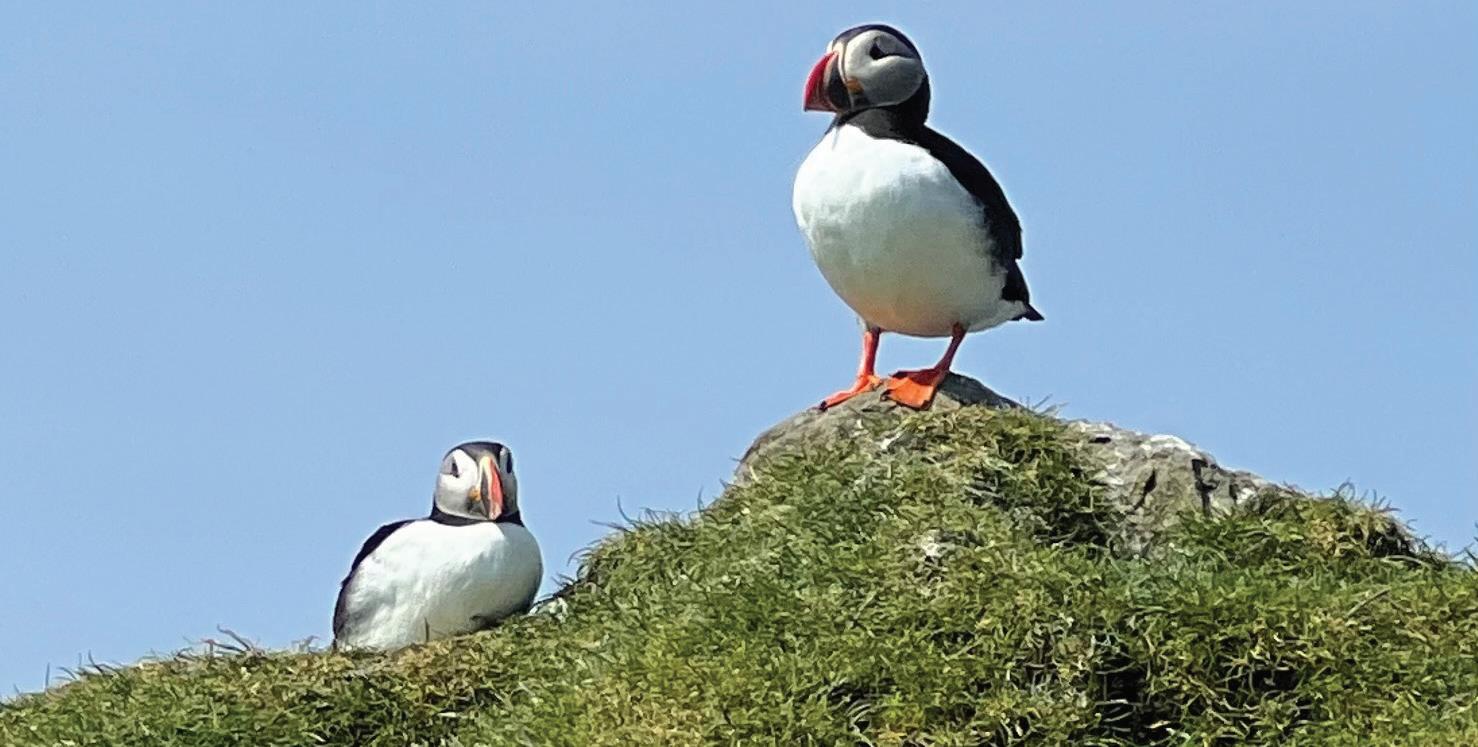
Faroese horses are on the brink of extinction, but there is still a possibility for horse lovers to get up close and personal with them. Take the opportunity to explore the dramatic landscape of the Faroe Islands on horseback while doing your part to contribute to the preservation of this unique animal.

Fjallaross, meaning ”mountain pony” in Faroese, are purebred horses that exist only in the Faroe Islands due to a long history of geographical isolation. Their miniature stature make them ponies technically speaking, but the Faroese consider them to be horses due to their immense strength. At first glance, they may be mistaken for Icelandic ponies since the two are somewhat similar in appearance, but unlike Icelandic ponies, Faroese horses date as far back as the 7th century, predating the arrival of the Vikings to the Faroe Islands. In fact, traveling Vikings discovered them roaming wild at the mountain tops when they first settled on the
By Noelle Normanislands. Faroese horses are known for being very good-tempered, gentle, and sure-footed, hence they quickly became essential in carrying out various functions for the new settlers, including traditional farming practices and riding. Before the Second World War, they were even exported to Great Britain for use in the coal mines, but nowadays they mainly serve as a reminder of the islands’ ancient past and a symbol of the unique Faroese flora and fauna.
Horse enthusiast Anna Louisa Joensen is the woman behind Fjallaross, the only company on the islands that offers riding tours on Faroese horses for tourists, beginners, and experts alike. Since the horses them-
selves are so unique, Anna Louisa decided to disregard common practices that she has found to be unsuitable or unnatural for these horses, subsequently choosing to ride without saddle or horseshoes. When embarking on our riding tour, Anna Louisa instructed that I ought to simply hold on to the horse’s mane and keep the reins loose, reasoning:
“The horses have been here longer than people and the terrain is wellknown to them, so it is better to let the horse decide which path to take.”
So I did. Despite being a little out of my element and nervous about riding bareback for the first time, my horse, Grane (the name of the hero’s horse in old Faroese folklore), guided
me up the loose piles of stone, steadily climbing up to the top of a nearby mountain, 1,200 feet up. Here, we enjoyed the gorgeous view of the clouds and ocean below. The magnificent scenery and the overall riding experience was awe-inspiring, and my horse, true to what I had previously researched, was very calm and friendly, never taking advantage of my inexperience or the loose reins.
Sadly, the Faroese horse is on the brink of extinction. Their population numbers have oscillated throughout the centuries, currently resting at about 80 thanks to the strenuous efforts of Anna Louisa and others. Yet this number also includes many that are at risk of being put down since there is a lack of people willing to take care of them. The mares are relatively easy to find homes for, but the stallions are typically more hot-tempered and hence more difficult to care for
and place. Through Fjallaross’ riding tours and stable, Anna Louisa has made it her life’s mission to protect the species to the best of her ability. However, she stresses that there is only so much she can take on; only so much one person can do. More resources and more families willing to breed and care for these horses are needed.
Some claim that Faroese horses may be related to a wild herd of horses living isolated on Sable Island, Nova Scotia. According to stories passed down through Indigenous tribes, the horses arrived on the island by swimming from a boat wreckage long before the first Scandinavians settled in Canada. Faroese accounts allege an English ship departed for America in the year 1625 with a load of Faroese ponies on board. Could these horses have survived somehow and swam ashore? Indeed, the Sable Island horses bear a striking resemblance to
Nordic and Scandinavian horse breeds in general, and to Faroese horses in particular. However, whether or not these horses do in fact have the same ancestors has not been proven as DNA comparisons are yet to be done. As for Anna Louisa, she is convinced that they are related and could constitute a positive development in the fight to conserve the Faroese horse breed as their isolation on Sable Island means they would still be purebred. She is hoping for DNA tests in the near future.
The proceeds from Fjallaross riding tours go towards the preservation of the Faroese horse through helping to pay for costs associated with the care and protection of the horses. If you aren’t able to go on a tour yourself, but still wish to support the cause, you can make a donation on Gofundme or via the donations page on the Fjallaross website www.faroehorse.com

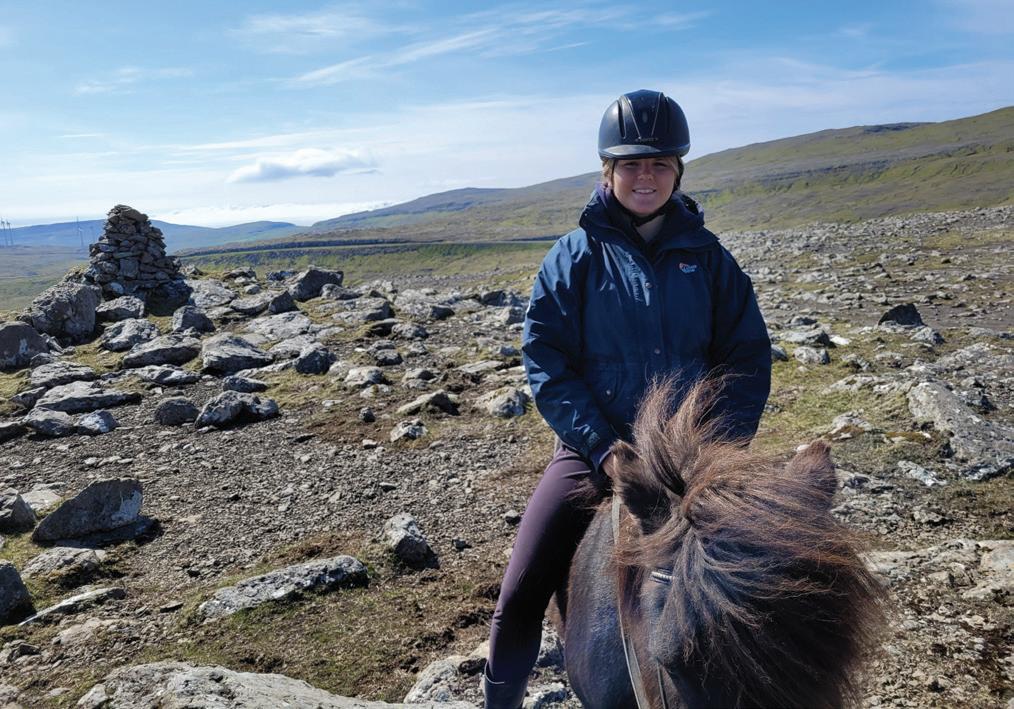

Helicopters and cocktails were two of 007’s favorite things. Why not indulge in both as you head to Klaksvík on Borðoy island to honor the memory of James Bond at the site where “No Time To Die” was filmed.
By Kajsa NormanSpoiler Alert: If you haven’t seen the latest James Bond movie and don’t wish to know the ending – stop reading now.
In “No Time To Die”, James Bond has left active service and is enjoying the quiet life in Jamaica when an old friend from the CIA shows up asking for help. As always, the mission turns out to be far more dangerous than expected, leading Bond onto the trail of a mysterious villain Lyutsifer Safin (played by Rami Malek), who has headquartered himself on a remote island armed with a poisonous new technology.
That remote island, where Daniel Craig fights his last battle as 007, is Kalsoy in the Faroe Islands and its dramatic landscape is best viewed

from the air.
With Faroese airline Atlantic Airways, you can soak in the scenery from the film on a guided helicopter tour where you fly over the dramatic cliffs of Kalsoy island and past the iconic Kallur Lighthouse to catch a glimpse of the final resting place of James Bond. The inaccessible promontory where 007 dies, as well as a physical gravestone erected in his honor, are both visible from the air. The tour departs from the Heliport in Klaksvík on Borðoy island, every Wednesday from mid-June to mid-August, and costs 1,500 DKK ($220) per person. For more info, visit: www.atlanticairways.com
If you’d like to start or finish your James Bond experience with a martini
– shaken not stirred, of course – it so happens that Klaksvík is also home to the main brewery of the Faroe Islands – Föroya Bjór. Founded in 1888, this Faroese family brewery, controls about 75 percent of the Faroese beer market via popular local brands such as Sluppöl, Veðrur and Black Sheep. They also produce soft drinks and a series of spirits, called Einar just like the owner Einar Waag, his father before him, and his grandson. In late 2020, Föroya Bjór released the first ever Faroese Whiskey, a single malt which sold out in one day and was rated “outstanding” by the Whisky Bible.
Today, the brewery is open for tours and tastings, and they produce a fantastic gin which would make a fine base for any Bond-style martini.
Ancient collections of ballads have been key to preserving the Faroese language. After the reformation, Danish became the language of the church as well as the written language of the Faroe Islands, putting the survival of the local language under threat.
By Kajsa NormanFaroese belongs to the West Scandinavian group of the North Germanic languages. It contains more characteristics of Old Norse than any other language except modern Icelandic, to which it is closely related, yet mutually unintelligible. Only some 70,000 people speak Faroese, around 50,000 of whom live in the Faroe Islands while the remainder reside abroad, mainly in Denmark. Despite formally belonging to the Kingdom of Denmark and having a large diaspora residing in Denmark, the Danish language never managed to replace Faroese. Some claim this is partly due to the rich tradition of Faroese ballads and the practice of the traditional Faroese chain dance, for which it is necessary to learn and remember long stories in Faroese. In fact, the ancient, heroic Faroese ballads number an astonishing 70,000 verses in total, all of which have been handed down orally from generation to generation.
The Faroese chain dance is a variant of the medieval ring dance that developed in France and spread throughout Europe. In many places, it went out of fashion or was forbidden by the authorities, but in the Faroe Islands it lived on. The dance is guided by the accompanying song and story as there is no instrumental accompaniment. One person or a couple of people lead the song, while the rest take part by performing the dance steps and by singing the chorus after
each verse. The dance steps are easy and always the same; two steps to the left, one step to the right. The mood of the song guides the force and intensity of the steps. If it’s a sad story, the steps will be soft, if it’s a dramatic story, feet will stamp hard, and if its joyful, they will be bouncy and light. The dance isn’t much to behold; to truly appreciate it, you must participate.
In the quaint village of Gjógv, on the northern tip of Eysturoy island, you can learn about Faroese music and dance at the Gjáargarður guesthouse. Every Wednesday night during
the summer months, the guesthouse arranges a cultural evening where guest can sample traditional Faroese food, including specialties such as fermented sheep and whale meat, different types of sheep sausage, whale fat, and local fish prepared in a myriad of ways. The main highlight, however, is the opportunity to listen to live music by Faroese artists, learn the traditional chain songs known as “kvæði”, and to try the chain dance yourself.
For more information, visit www.gjaargardur.fo

From traditional craft born of necessity to contemporary art with a punk heart, Leaving Your Mark is an exploration of lived experience, tradition, and change, conveyed through the craft of wood.
 By Darby Johnson
By Darby Johnson
This new exhibition, on through October 29 at the American Swedish Institute in Minneapolis, features the U.S. premiere of Swedish artist Claes Larsson, known as ClaesKamp, whose expressive woodcarvings reflect his punk rock roots and respond to contemporary issues facing the world. Primarily creating sculptures out of wood, Claes explores the border between traditional woodwork and the foundational experiences of his younger years with street art and punk. His techniques are surprising, and in many ways topple the traditional rules of wood slöjd in pursuit of the next generation of this artform. His works invite visitors to reconsider the notion that handcraft is primarily a functional art form, or an art of survival, and at the same time underscore handcraft’s longstanding tradition as a medium for the exchange of ideas.
“As a kid I used to have ‘painting Friday’s’ with my dad,” says Claes. “He got a beer, and I got something with a lot of sugar, we listened to rock n’ roll and painted all night. Never with any demands of certain results or progress, but for the fun of it. That’s where I
found art.”
Today, art is activism for Claes. As he carves and shapes wood, Claes processes the world around him. The cut of the blade, the array of colors, and his use of imagery and words capture certain perspectives and emotive responses to both pivotal events and woodworking tradition.
Alongside Claes’s work are pieces by local artist Liesl Chatman. Liesl employs kolrosing and carving as means to process and reflect on lived experience. Among other works by
Liesl, visitors can view a special spoon carving project she launched in 2020 to respond to the simultaneous crises of COVID-19, the murder of George Floyd, and the ensuing protests that erupted only a few blocks from ASI’s campus.
A series of carefully selected handcarved objects from ASI’s collection are displayed throughout the historic Turnblad Mansion—which is itself a masterclass in woodcarving. Throughout the galleries, visitors encounter tools of necessity made and used by
some of Minnesota’s earliest settlers to the sentimental objects brought by Nordic immigrants and passed on through generations. Although separated by time and place, these objects represent the lived experiences of each of their makers and invite visitors to consider how handcraft has evolved over time.



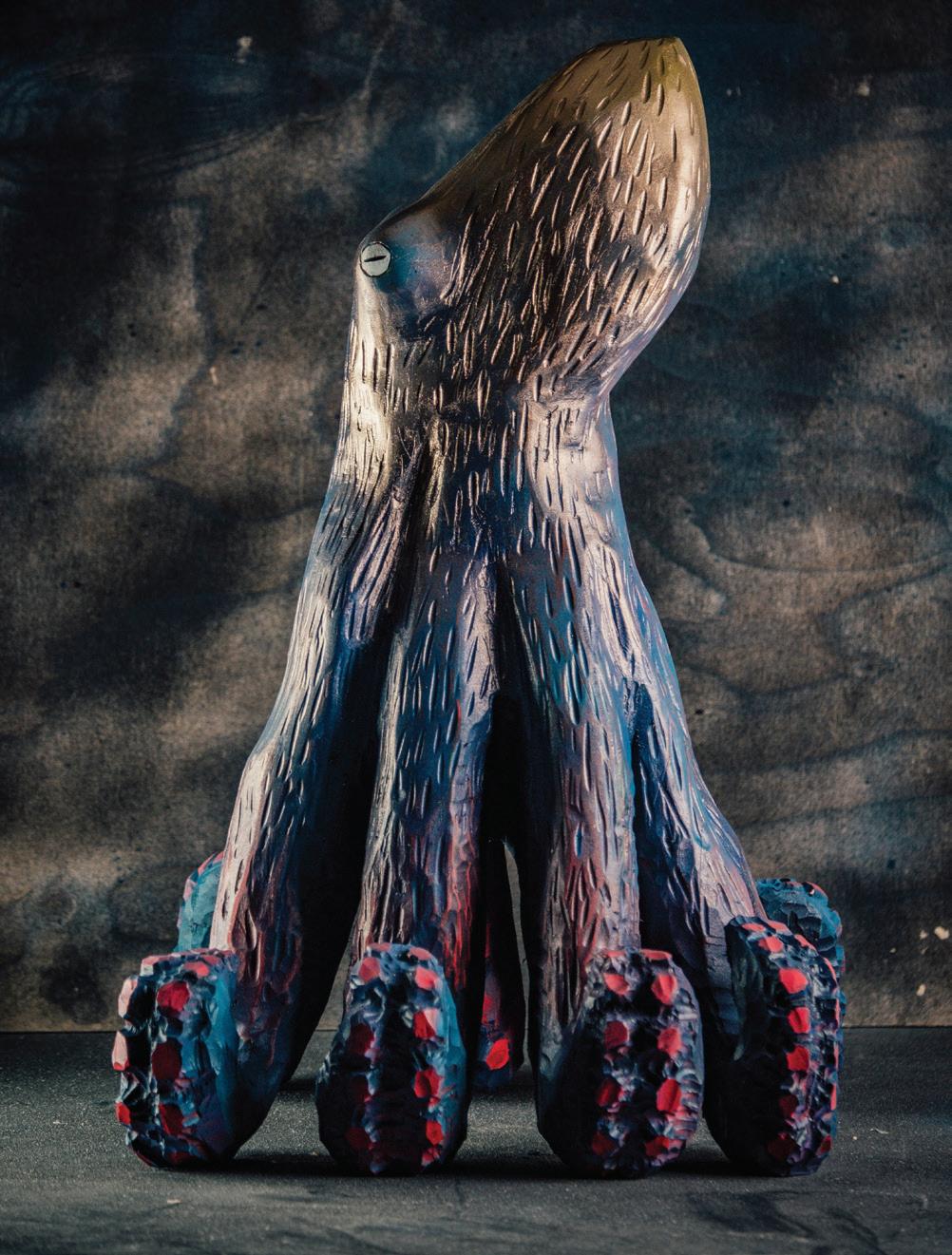
Visitors are also able to view a selection of Scandinavian flat-plane figure carvings from ASI’s collection by beloved Swedish artist Herman Rosell (1893–1969) alongside excerpts from As It Was Before, a new publication that tells stories of Swedish immigration to America inspired by Rosell's figure carvings.
 The Octopus – carving by Claes Larsson.
Teaparty by Herman Rosell.
Claes Larsson. Photos: American Swedish Institute
Liesl Chatman´s special spoon carving project.
The exhibition Leaving Your Mark: Stories in Wood is on through October 29th at American Swedish Institute, 2600 Park Ave, Minneapolis. For more information, please visit: www.asimn.org
The Octopus – carving by Claes Larsson.
Teaparty by Herman Rosell.
Claes Larsson. Photos: American Swedish Institute
Liesl Chatman´s special spoon carving project.
The exhibition Leaving Your Mark: Stories in Wood is on through October 29th at American Swedish Institute, 2600 Park Ave, Minneapolis. For more information, please visit: www.asimn.org
CHICAGO
Swedish American Museum
5211 N. Clark St., Chicago, IL 60640
Tel: 773-728 8111 | info@samac.org
www.swedishamericanmuseum.org
Sign up for the events on website.
Aug 7-11 – Swedish Sommarläger
Ongoing through Aug 13 – Letters From Home – a collaborative contemporary art exhibit that brings together artists in Sweden and Chicago.
Aug 17 – Thur 6pm: Dala Animal Decoration
Aug 19 – Sat 6pm: Scandinavian Dance Evening
Aug 26 – Sat 11am-1pm: Family Fun Fest
DETROIT
Swedish Club of Southeast Michigan
22398 Ruth St, Farmington Hills, MI 48336
Tel: 248-478-2563 | www.swedishclub.net
We have monthly meetings and meals at 1:00 on Sundays, unless the Sunday falls on a holiday weekend and then we gather on the second Sunday of the month. For those of you who are interested in "brushing-up" on your Swedish language skills, language classes are provided at the Club.
MINNEAPOLIS
American Swedish Institute
2600 Park Ave. Minneapolis, MN 55407 Tel: 612-871 4907 | www.asimn.org
Ongoing through Oct 29 – Leaving Your Mark: Stories in Wood.
Aug 4 – Fri 5-9pm: Summer Lawn Party
Aug 7-11 – Daily: 9am-3pm: Folk Music Camp
Aug 11-13 – 10am-5pm: Scandinavian Figure Carving
PHILADELPHIA
American Swedish Historical Museum
1900 Pattison Avenue, Philadelphia, PA 19145 | Tel: 215-389 1776 | info@americanswedish.org | www.americanswedish.org
Mar 30 - Sep 24 – Radically Marimekko
Aug 18 – Fri 6:30pm: Cray Fish Party
PORTLAND
Nordic Northwest
Nordia House, 8800 SW Oleson Rd., Portland, OR 97223 | Tel: 503-977 0275 www.nordicnorthwest.org
All events please register on website.
Aug 4, Sep 15 – Film Screening. See website for more info.
Aug 9 – Wed 6-8pm: Skål Night – Ridgewalker Brewing & Wyrd Meadery
Aug 12 – Sat 7pm: The ABBAgraphs. Doors open at 6pm. Buy tickets online.
Aug 25 & 26 – Fri & Sat 3-10pm: Viking Beer Fest.
Ongoing through Nov 5 – Threads – Interwined in Iceland: Textiles and Book Arts
SEATTLE
Swedish Cultural Center
1920 Dexter Ave. N. Seattle, WA 98109 Tel: 206-283 1090 | www.swedishclubnw.org info@swedishculturalcenter.org
Every week – Swedish Language Classes. Beginners, Intermediate, Advanced, Expert Conversational Swedish, and Cultural Classes in English. Call to register. Most classes are $114 for Club members, $144 for non-members. Available via Zoom and in-person.
Tuesdays – Weaving Classes. Visit the website for more info.
Wednesdays – 5pm: Lilla fredag (Little Friday)
Fridays – 6pm: Swedish Happy Hour
National Nordic Museum
2655 NW Market Street, Seattle, WA 98107 Tel: 206-789 5707 | nordic@nordicmuseum.org www.nordicmuseum.org. Various events – in-person or online. Please visit our website for updates. Buy tickets or register online.
Jul 15- Nov 5 – Steinunn Þórarinsdóttir: Wayfinders
Aug 12 – Sat 5-9pm: Swedish Kräftskiva Party
Aug 19-Nov 23 – Arctic Highways: art and handicraft by Indigenous artists
WASHINGTON, DC
Embassy of Sweden
2900 K Street, N.W. Washington, DC 20007 Tel: 202-467 2600 | www.swedenabroad.com
A guide to fun and interesting
Swedish events outside Sweden
ambassaden.washington@gov.se
Visiting and telephone hours: Mon-Fri 9am4pm (closed for lunch 12-1pm)
OTTAWA
Embassy of Sweden
377 Dalhousie Street, Suite 305, Ottawa ON K1N 9NB Tel: 613-244 8200
www.swedenabroad.se/en/embassies/ canada-ottawa/ General inquiries: ambassaden.ottawa@gov.se
Work and Residence Permit Inquiries: sweden.ottawa.permits@gov.se
Visiting hours: Mon-Fri 9am-12 noon. Phone hours are: Mon-Fri 10am-12 noon
TORONTO
Swedish Lutheran Church
25 Old York Mills Rd, North York, ON M2P 1B5 toronto@svenskakyrkan.se
Tel: 416 486-0466
Please visit www.svenskakyrkan.se/toronto
Mobil präst i Nordamerika: Maria Scharffenberg; e-mail: maria.scharffenberg@svenskakyrkan.se
VANCOUVER
Scandinavian Community Centre
6540 Thomas Street, Burnaby, BC V5B 4P9
Tel: 604-294 2777 | info@scancentre.org
www.scancentre.org
Please visit our website for more info and to see our events.
Swedish Cultural Assoc of Manitoba
Scandinavian Cultural Centre
764 Erin St, Winnipeg, Manitoba R3G 2W4 Tel: 204-774 8047
www.scandinaviancentre.ca
Event registration by email at: svenskclub17@gmail.com
Aug 13-19 – Folkorama: Come and see us at the Scandinavian Pavilion
Aug 31 – Crayfish party in Fraser Grove Park.
Sept 15 – Trip to Lundar, Eriksdale, Steep Rock
In the works - trips to Minneapolis and Lindsborg, Kansas
Scandinavian Business Club
Monthly meetings feature business speakers. Guests and new members welcome. Call SBC: 604-484-8238. Visit us at www.sbcbc.ca
Scandinavian Community Centre Scandinavian Community Centre Beautiful setting for weddings, parties, birthdays, meetings and seminars. 6540 Thomas Street, Burnaby, BC info@scancentre.org Tel: 604-294-2777 www.scancentre.org
Svenska Kulturföreningen
Ordförande Niklas Z Kviselius
604-218-7528. Kassör är Christel Lindstrom, 604-537-0557 www.swedishculturalsociety.com. Email: swedishculturalsociety.ca @gmail.com
Swedish Canadian Village Beautiful Assisted Living Residence & Senior Subsidized Apartment Buildings Located in Burnaby, BC. Tel: 604-420 1124; www.swedishcanadian.ca. Email: info@swedishcanadian.ca
Swedish Heritage in BC

1812 Duthie Ave. Burnaby BC. Laila Axén Tel: 604-526 7464. Visit us at www.swedishheritageinbc.org.
E-mail: swedishheritagebc@gmail.com
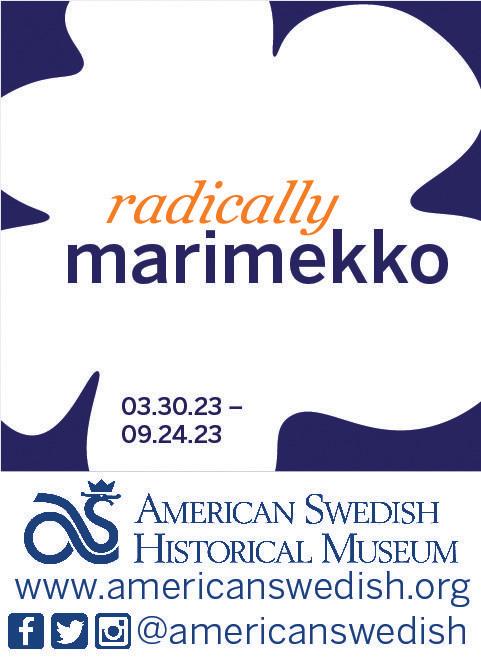
Sweden House Society
President: Rebecca Keckman

Vice President: Dorothy Carlson
Treasurer: Carole Walkinshaw, Email: swedenhousechair@gmail.com

Nordic Museum has moved to a beautiful, brand-new building! In Seattle, 2655 N.W. Market St., Ballard; 206-789 5707.
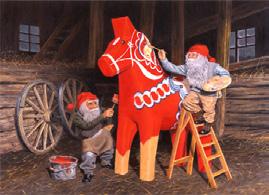
Swedish Club
1920 Dexter Ave. N, Seattle, WA 98109; Tel: 206-283 1090. Open Wednesday evenings for supper and games, Friday for lunch and dinner. Pancake breakfasts on first Sundays of the month. Rental venue for meeting, parties, etc. www.swedishclubnw.org
Classified
Advertising Sales Reps wanted Swedish Press is looking for full or part-time advertising sales representatives. For more information: info@swedishpress.com


Swedish Press Classified Ad Rate is as low as 2 dollars per word (minimum $25/ad or $100 annually). Send your ad to: advertise@swedishpress.com

Söndagen efter midsommar var en speciell dag i Danska kyrkan i Toronto. Då var det avskedsgudstjänst för Pastor Simon Kangas Larsen som varit där i fyra och ett halvt år. Självklart var även vi från Svenska kyrkan på plats och önskade Simon lycka till i sina nya arbetsuppgifter. Svenska och Danska kyrkan har av tradition ett nära samarbete.
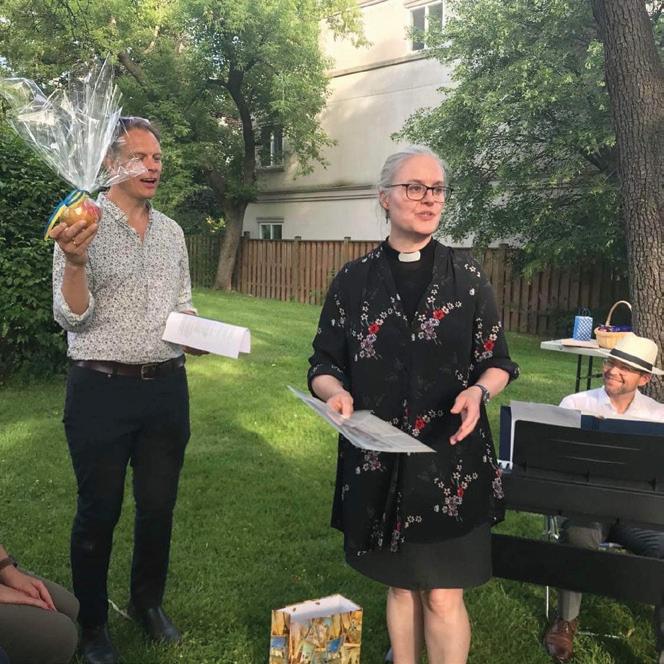
Svenska och Danska kyrkan har ett mycket gott samarbete som sträcker sig lång tillbaka i tiden. Under 1980- och början av 1990-talet var den svenska församlingen till och med hyresgäster i Danska kyrkan här i Toronto. Men samarbetet mellan Svenska och Danska kyrkan är inte unikt för Toronto utan är detsamma i hela världen. Allt som oftast lånar vi kyrkor av varandra och vi som präster hoppar in för varandra om det behövs. Så har till exempel Simon regelbundet tagit hand om gudstjänster i Svenska kyrkan och jag har fått hoppa in i Danska kyrkan och ta hand om en gudstjänst där.
Vad är då skillnaden mellan Svenska kyrkan och Danska kyrkan, förutom själva språket? Det enkla svaret är att skillnaderna inte är så stora. Det man som besökare noterar kanske först är faktiskt prästens klädsel. Danska kyrkan är av en mer pietistisk inriktning än den svenska. Så under gudstjänsten när den svenska prästen har vit alba, färgglad mässhake, och så vidare, så bär den danska kollegan svart prästrock med den karakteristiska pipkragen.
Själva gudstjänsten är dessutom mer avskalad i den danska kyrkan. Det
är mer fokus på ordet och förkunnelsen, medan den svenska kyrkans liturgi innehåller fler moment.
Vid nattvarden märks också en skillnad som faktiskt var en fördel för danska kyrkan under pandemin. Där har man nämligen av tradition så kallade särkalkar. Det vill säga att under nattvarden får var och en brödet (oblaten) i sin öppna hand, men istället för att dricka eller doppa i en gemensam kalk får var och en, en egen liten kalk att dricka ur. Å ena sidan
väldigt hygieniskt och bra (även om det ju blir ganska mycket disk efteråt). Å andra sidan finns det de som tycker att detta går emot Jesu ord om att dela gemenskapens kalk. Bruket av särkalkar blir dock vanligare och vanligare och något som vi ibland även använder i svenskkyrkliga sammanhang.
Men allt detta är bara detaljer. Det viktiga är att i grunden är vi lika. Predikar samma tro och ber till samma Gud.
I höst kommer det en ny pastor till Danska kyrkan här i Toronto. Samarbetet mellan våra församlingar kommer att fortsätta och vi har redan börjat planera nordiska gudstjänster där både Svenska, Danska och Finska kyrkan firar tillsammans.
Summary in English: There is a long history of collaboration between the Danish and the Swedish churches, even though some elements of their traditional worship differ. In Toronto, joint Nordic worship services are currently being planned where the Swedish, Danish, and Finnish churches will celebrate together.
